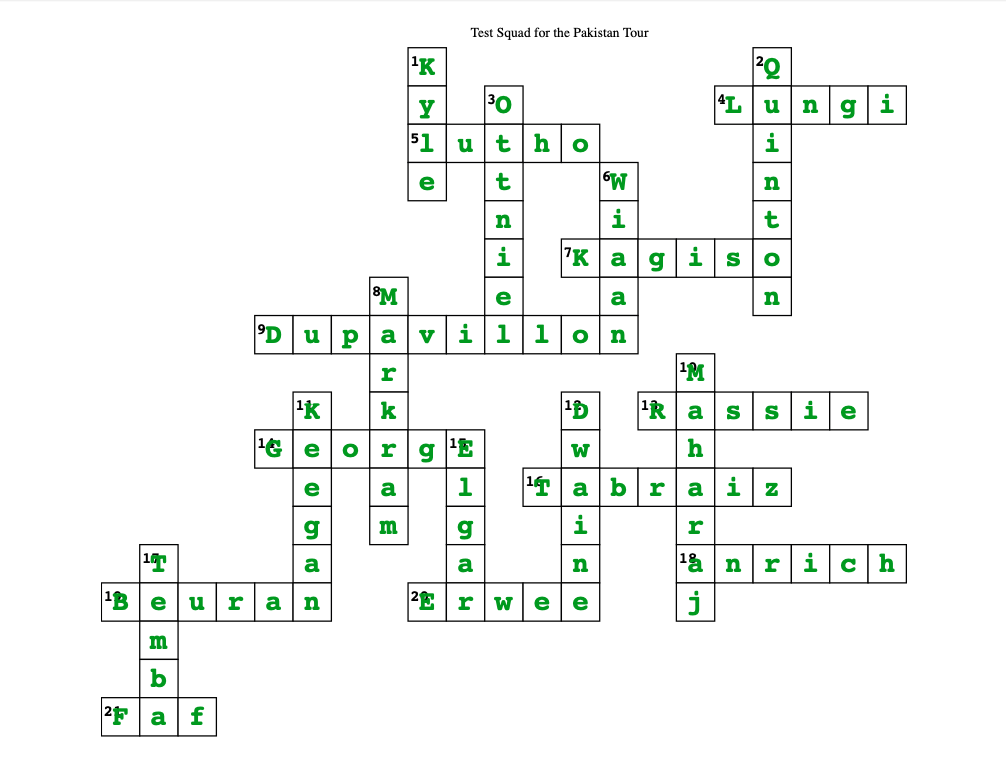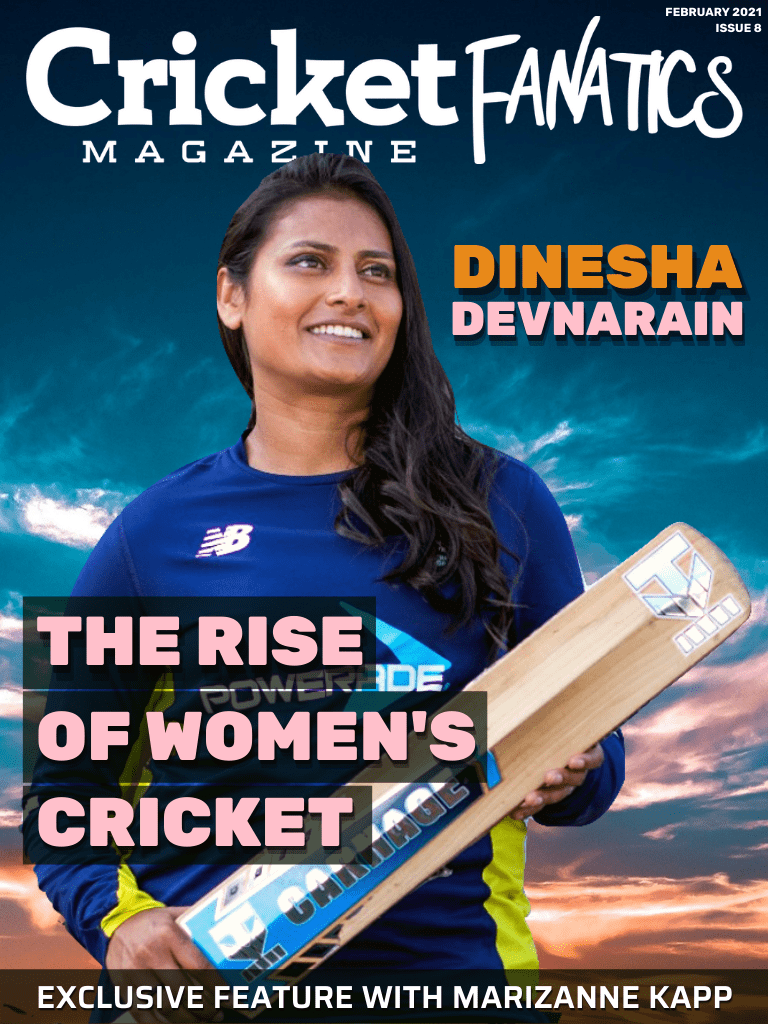
Table of Contents
EDITOR'S NOTE
Women's Cricket deserves our recognition
Khalid Mohidin
Founder and Editor - Cricket Fanatics Magazine
The Women's Game has been overlooked for too long. For years, there has not been enough coverage, not enough exposure, not enough money put into the game to help it grow.
In fact, till this day, in South Africa, provincial Women do not get paid a salary (bar Gauteng who have started this initiative in 2021).
They play for the passion of the game and the love for this sport alone.
The dedication and sacrifice that women have made for the growth of this game is phenomenal, and their stories must be told and their achievements highlighted.
We, as a publication want to play an influential role in the promotion of Women in this sport – cricketers, administrators, coaches and media.
In this issue, we shine the light on the Women's Game, in the first ever Women's edition of Cricket Fanatics Magazine. The first of many to come.
We analyse where the game can improve in South Africa, what we can learn, and what needs to be done to help accelerate its growth.
It's imperative that Women’s Cricket gets a tunnelled focus – the past, present and the future.
So sit back, grab a beverage and a snack, and enjoy the first ever Women's Special edition of Cricket Fanatics Magazine.
Sponsor a future edition by becoming a patron
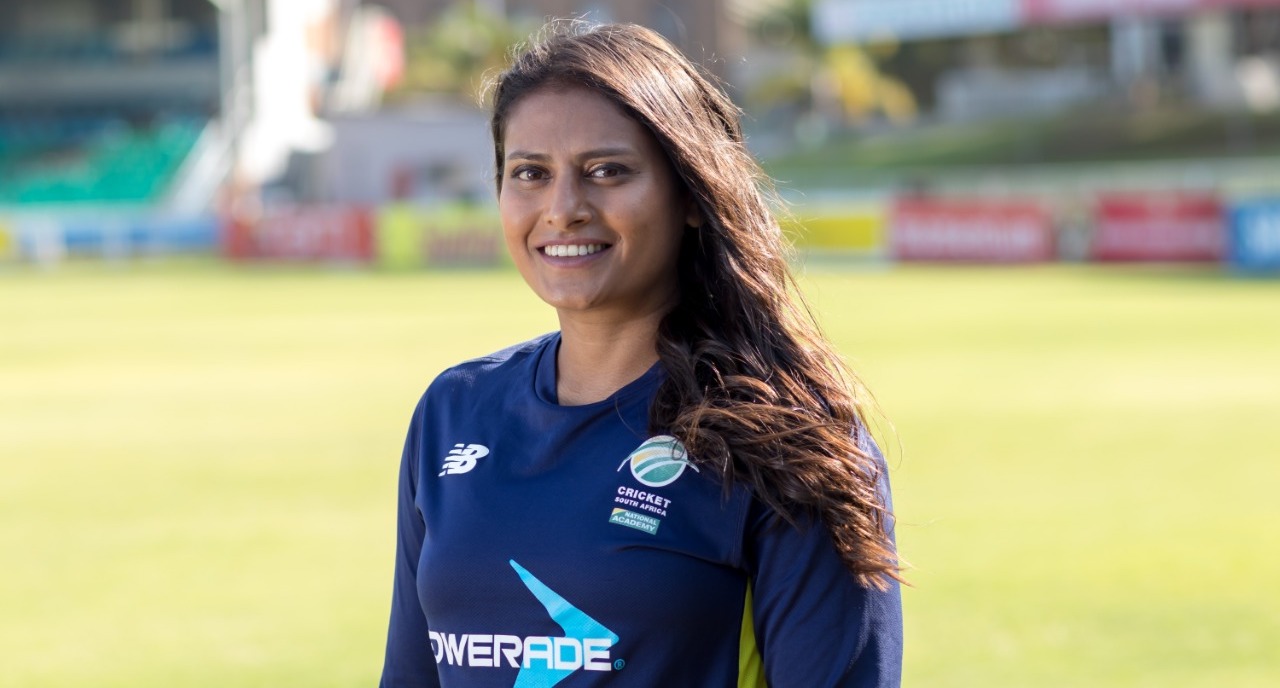
“I just want to give the girls something that I never got”
By Emily Norris
Growing up playing cricket has taught me how many gaps there are in the women's game that still need to be filled.
Women’s cricket was always overlooked and because of the lack of opportunities that women got compared to men, there were moments when I lost faith and was tempted to give up hope on the game.
Talking to Dinesha Devnarain has restored my hope for the future of women’s cricket.
Many women have similar stories of growing up playing cricket with their brothers or dads in their backyard and how this took them on the path of playing the game. Devnarain's story may have a similar beginning, but she faced a lot of obstacles along the way that have shaped her as a person, player and coach.
If you are a young female cricketer wanting to play for South Africa, then there is no better story to give you hope for Women’s Cricket in South Africa.
Although her experiences and life-lessons while playing the game shaped her into the coach that she is today, it's her vision for the prosperity of this game that makes it clear that she holds the key to a better future for women’s cricket in South Africa.
To unlock her vision and understand her mentality, you have to understand her journey and how she fell in love with this incredible game.
Devnarain is the South Africa Women’s U19 and National Academy Coach and started playing cricket at the tender age of 6 when her brothers introduced her to the game. She retired from international cricket in 2016 to take up coaching.
“My first passion was soccer. I didn’t know cricket at the time, but then there was a world cup on and my brothers and I said we were going to start this cricket tournament; it was proper street yard cricket, where we drew our stumps on the wall – and I still remember that the ball that we had was a taped-up potato or something like that, we didn’t have a tennis ball.
"In 1999 we moved to Durban, and my dad got in contact with some people and I started playing club cricket, and then from there I went through the ranks with provincial and school selection, and in 2008 I received my national call-up. In 2016 I hung up my boots and took up coaching.”
Being a cricketer and playing a sport is predominantly thought of as a male's activity, and like most female cricketers starting, Devnarain too faced many challenges.
“We were very stereotyped – a girl can’t bowl; a girl can’t bat; if a girl gets you out, it’s the worst thing that could happen to a boy’s game.”
These stereotypes were “part of the reason of what drove me to do well, to prove that it’s not a male-dominant sport.”
Sadly, these stereotypes still exist today, and it needs to change for the better. “I still do think up until now, the game still has stereotypes, because if you meet a stranger in a supermarket or [you’re] just talking cricket, they wouldn’t take your opinion seriously because you’re a female and what female knows about cricket? So, there are a lot of things that can change”.
Despite becoming a coach, these stereotypes never disappeared for Devnarain. “You think that now you’re in a leadership role, most coaches or most guys will value what you say but now it’s a thing of you ‘must have a female representative’ instead of ‘this girl knows what she is speaking about’.”
Throughout her playing career, even though she had many challenges, and even though she wasn’t contracted for the first part of her career, her parents, especially her dad, supported her through everything.
“My late dad has been a pillar in my career and even though he is not here today, there are a lot of things I do for him. Whether he had a lot, whether he had a little, he made it work. And that was his motto. If there’s a will, there’s a way. I will take that through my whole life.
"If you’re willing to fight for something you will find a way. If you believe in something you will make a way.
"I retired initially in 2013 after I lost my sister, and then I came back in 2015 with a contract, but was that the reason why I played? Of course not. It had nothing to do with the money. It wasn’t about wanting to be a professional cricketer; it was purely passion.”
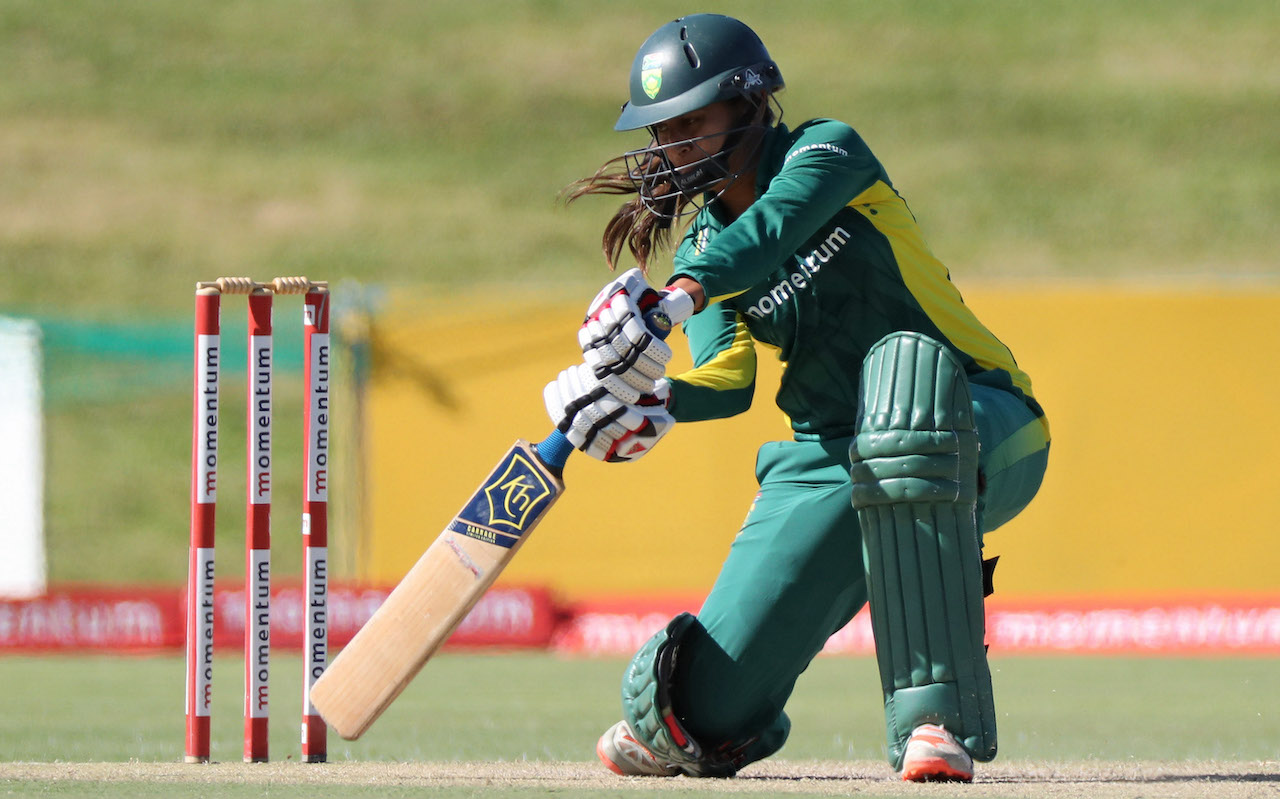
Devnarain has a BCom degree in Finance as well as an HR degree. Despite this, her love for the game and passion for coaching means more to her than her degrees.
“I get prouder when I say now that I’m a coach of South Africa U19 Women and National Academy. I don’t want to talk about the finance degree or the HR degree, that doesn’t give me the same pride and passion for the job that I have now.”
It wasn’t just her dad that’s had a massive impact on her career, but her mom too.
“When it comes to life and being a good human being, being a respectful human being, showing kindness and compassion – a lot of those coaching traits that I have now, come from her.
"A lot of people ask me 'who was your role model in a coaching role or a playing role?' and I still can’t find an answer, because it’s got to make an impact in my life, and those are the two individuals that stand out above anyone.”
For Devnarain coaching wasn’t a planned decision but in 2015 she did her level 3 certificate because she knew it would benefit her somehow.
“Even at that point I wasn’t like, ‘I’m going to be a coach for the rest of my life’ because as much as I was passionate about the sport, I always felt that the sport took away my loved ones.
"[I lost] my dad, my gran that lived with us, and then my sister – all of those were when I was on cricket tours. So, I had this massive battle within myself – is cricket good for me, is it not?
"Up until today, I can’t tell you what it is. I would love to think that it’s a higher power that made me get back into the sport.”
While on her final tour in 2016, she found herself contemplating her life and cricketing career. She wasn’t that type of person that said, ‘at 25 I need to get married’, but she also knew that she wasn’t happy because cricket was no longer giving her the satisfaction that it used to.
“I had to backtrack again, [asking myself] what makes me happy, what gives me drive? – and it still went back to people – and I love the sport so much. So, I said that if there’s an opportunity [to coach] then I’m going to do this.” And as they say, the rest is history.
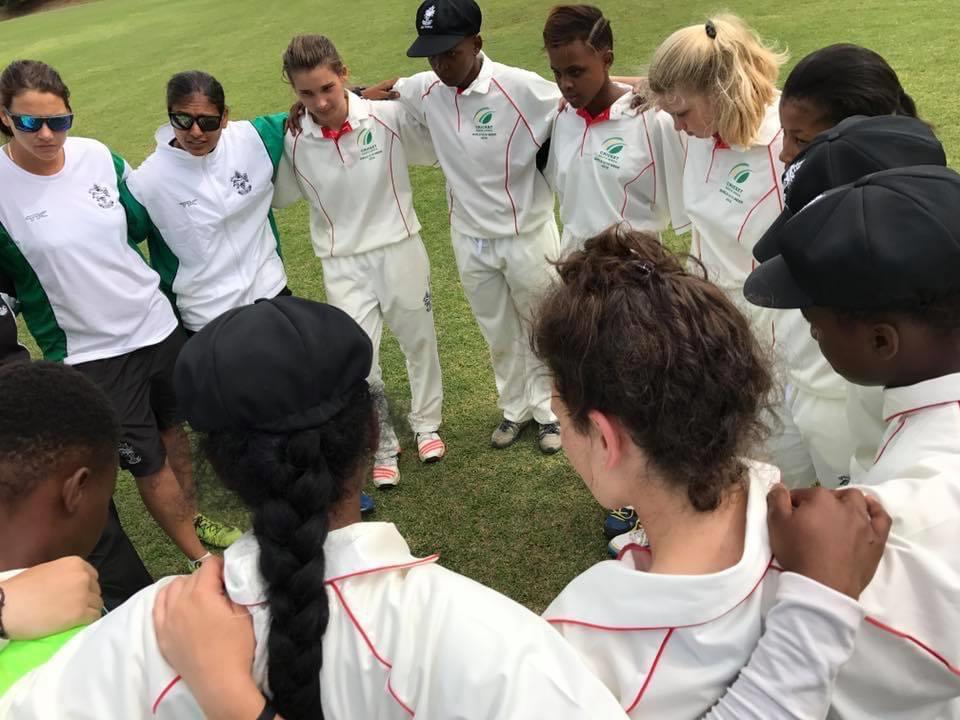
For Devnarain, success looks a little bit different to how success is usually viewed from a coach’s point of view.
“I coach to leave individuals and structures in a better place, and for me, that’s what success means. It’s not necessarily picking up a trophy and you saying, ‘you know what, we did it’.
"Yes, it will feel great, it’s a massive honour to do something like that, but for me, I coach so that girls are in a better position to make better decisions – [so that] they don’t have to go through what I went through. A girl getting her license, a girl getting a bursary, a girl getting her first car – that’s a success for me."
After not being shown care during her playing career and not feeling like she belonged, Devnarain wants to take the opposite approach to what she experienced and implement that into her coaching career.
“I just want to give the girls something that I never got. That’s no detriment to any person that coached me, I’m not having a go at anyone. I just need to point out the fact that I needed care, I needed direction, I needed structure. I will always be that voice that always wants them to get better, and I genuinely just care.
"I believe that you must first care for your players, then worry about the result. Don’t worry about the result. For now, first understand your players – what they like, what they don’t like, understand where they come from, understand what drives them. And then the skill will take care of itself, the result will take care of itself.
“Most of the girls that I coach, we don’t even speak cricket when we’re not on tour. That’s how your relationship starts, and it’s fantastic. People think we care by saying that we care, and it’s not necessarily the case.
“I think what will turn good coaches into successful coaches is trying to understand that every single player is different, and you’ve got to treat each player differently.
"It’s that care that when I get back home 2 weeks later, when we’re not together, [to show that] you actually cared by checking up on the player.”
When asking Devnarain what she would like to see a change in South African cricket, she gave several solutions that will help propel the game forward.
“What I would like for Cricket South Africa to do is to look at the second tier – your emerging players, your national academy players, your provincial players – how do we make them play for the badge?
"How do we make them get up in the morning and just go to the gym because they're being a professional? And I think that’s my biggest thing.”
She also added: “I do believe we can have a more vigorous effect on social media and how we promote the women’s game, I think we can be a lot better in that too.”
Furthermore, she mentioned that women don’t get enough game time.
“Women need to play more cricket. We will always be behind the 8-ball because we don’t play enough games and I’m not just talking at a national level. I’m talking about at provincial, U19, U16 and U13 level.
"At which point will girls’ cricket in schools be compulsory? We can’t keep giving an option, it can’t be an option anymore. If you look at all the other nations, I think that’s what they do well. Their structures are so strong.”
Devnarain stated that a lot can be done in terms of the development of cricket. She mentioned that something needs to be done in terms of a selection panel or talent scouts in various regions in each province, at all levels of the women’s game.
“When I worked at KZN Cricket, even though my role was just U19 and women’s coach, I made sure that I went to every U13 week, every U16 week.
I’ve done that for 6 years. And even club cricket and leagues lower than that. I wanted to understand what we have in the system. Before I stepped in, these girls were there, their talent was there, but no-one looked at them.”
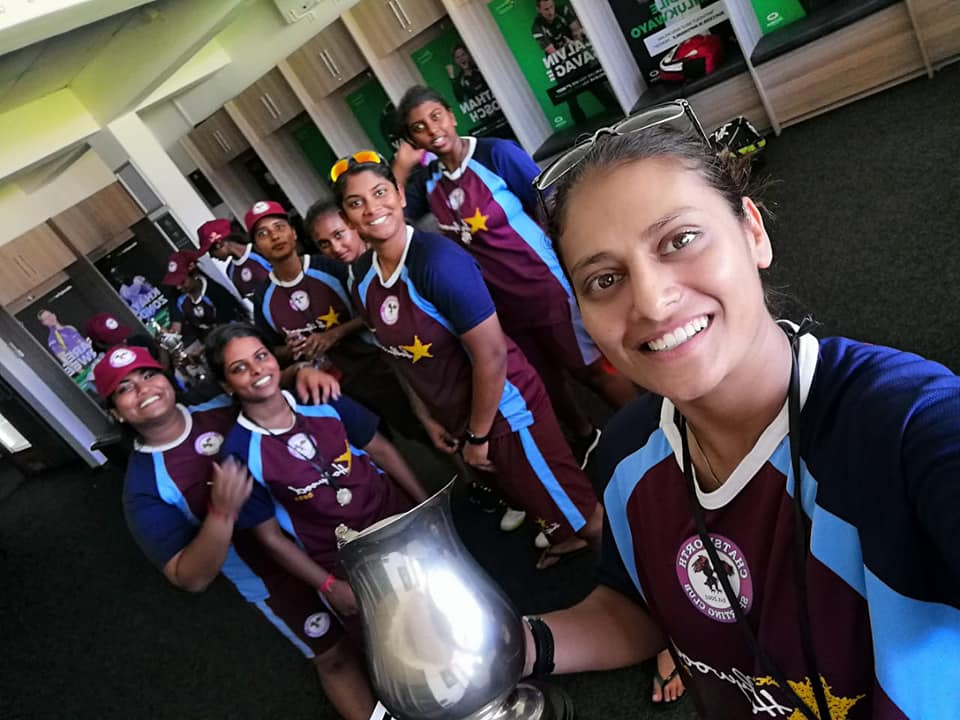
Devnarain wants South Africa to stop comparing themselves to the big cricketing nations, and to stop looking at what they do and then do the same. Instead, she wants us to try something different.
“Cricket has grown a lot. It’s grown a lot in South Africa as well. But your top-performing nations have bought more into the concept earlier on. We’ve improved, but the top-competing nations made sure that they improve 3 times more.
"The reason why Australia was successful is that they thought out of the box. They didn’t treat a women’s match like a women’s match. They treated it like a cricket match. We need to think outside of the box, figure out what identifies us, and do that well.
"It starts with us as a nation, we’ve got to celebrate these women’s successes. And the stakeholders play a part in that. These girls need to be recognised. And it’s not only cricket; it’s women in sport. We can grow so much more, we’ve just got to stop being reactive; let’s just be proactive and if it doesn’t work, it didn’t work. [Then we can] try a different route.”
What many don't know, is that Devnarain played in men’s teams competitively too. Devnarain wants to bring that competitiveness she experienced there, into the women’s game.
“What I enjoyed in the men’s space is that cricket was so competitive. That competitiveness – I would love to bring to the women’s game. The speed of the ball, the speed at which the game gets played at, and how hard guys come at you, is exactly what I’d love to bring to the women’s game, but with our own identity.”
Devnarain’s passion for cricket and her love and care for her players is exactly what young up-and-coming cricketers need. She is someone that I would’ve loved to have had as a coach, and anyone who has her right now is privileged to have her as a role model, mentor and coach.
She only wants what’s best for her players and her aim is to do everything she can to help keep growing women’s cricket – this has given me hope that women’s cricket in South Africa is in the right hands and can only get better from here.
Get More Clients With Cricket Fanatics Magazine
Cricket Fanatics Magazine has the visibility, infrastructure, expertise and toolset to automate your marketing and branding.
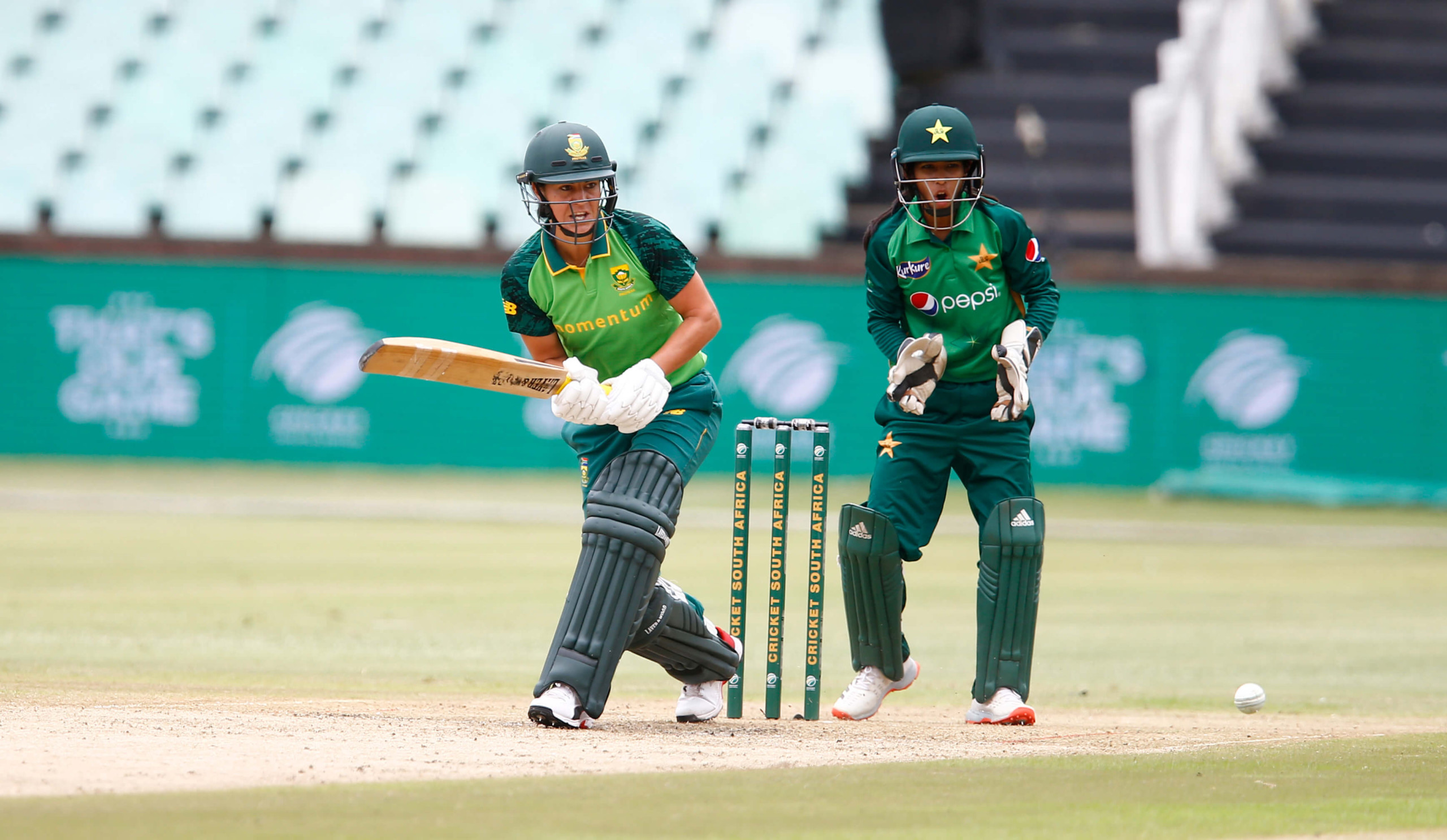
"Women’s cricket in SA could learn from Australia"
By Marc Jacobson
Marizanne Kapp believes South African women’s cricket can follow Australia’s example in terms of their professionalism and systematic approach in which they continuously grow the game and harness more talent.
Although admitting the women’s game has “grown massively” in South Africa over the last several years, Kapp said she’d still like to see more professional intervention in years to come.
“It’s definitely moving in the right direction, but I’d still like to see more former players getting involved, especially us, who played when [women’s cricket] was nowhere in SA,” Kapp told Cricket Fanatics Magazine.
“When we retire over the next few years I’d like to see more of the older players getting involved.
“I feel that people with a passion for the sport could help drive women’s cricket even more and hopefully get it to where it is in Australia at the moment.”
The Proteas star was pleasantly surprised to discover that their recent ODI and T20I series against Pakistan was televised, which she also believed was a step in the right direction.
“In the past, we would have so many people who supported us and who loved women’s cricket, but they’d never get to watch us, so that was one of the small things that would help grow the game.”
She added that when she retires one day, she’d like to play her part and “stay within the sport and help grow it even more” in SA.
“The growth has to start lower down,” she said. “It’s going to have to start at school level already.
“Just looking back at my career, the same stuff that I was taught at the age of 23 was taught to boys at the age of 16 at schools or clubs.
“It would also help a lot if we can get better coaching for women at a younger age.”
Professionalism among the cream of local women’s talent has reinforced the notion that the game is moving forward in SA and Kapp believes this progression could dangle the national carrot in front of young, aspiring stars.
“Professionalism is going to help the youngsters coming up, as well as their parents, because they may realize now that there’s a future for them in the sport, whereas when I left school my mother told me to get a proper job,” she quipped.
“Back then, cricket [among women] wasn’t big,” she said, adding that the current crop of national players should become role-models for young cricketers still in their infancy.
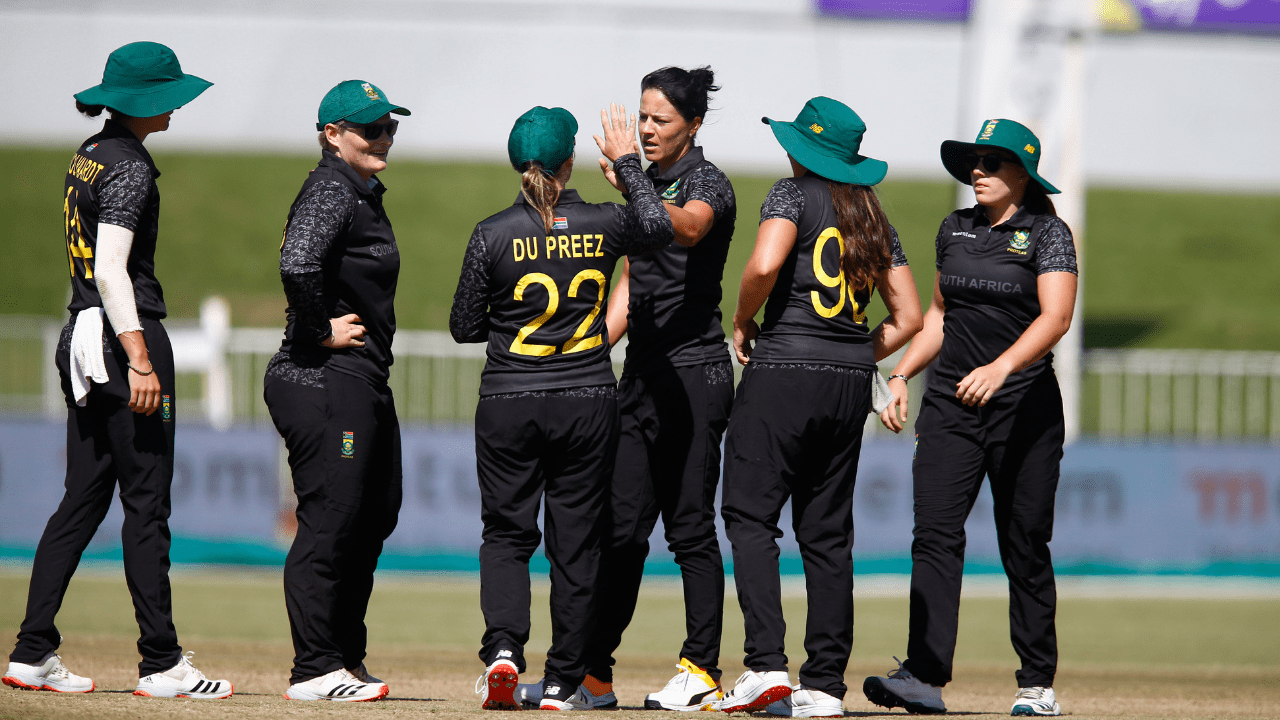
Kapp, who was schooled at DF Malherbe in Port Elizabeth, noted that because cricket “wasn’t big” when she was growing up, she wasn’t afforded the opportunities to look up to role-models within the women’s game.
Now that she has reached the peak of her powers, she wants to use it to become a mentor to those younger players coming through the ranks.
“It’s a bit easier now because I can still play in the same team as some of the youngsters coming up and I can sort of help them and teach them about what I know and what I’d do in certain situations.
“That’s why it helps to have some of your senior players and youngsters playing in the same team.”
The 31-year-old said the general perception towards women’s cricket has evolved since she was a young adult, mainly thanks to the turn of the professional era.
She added that previously women cricketers were forced to juggle full-time jobs and studies, along with practising, playing and touring, which was all a tedious prospect for young girl athletes.
“When I grew up there were so many parents who didn’t want their daughters to play cricket anymore because they simply didn’t see any future in it, whereas now it’s definitely different.
“Most of our games are now being televised and that helps as well. We’re also completely professional and we play full-on.
“We’ve reached the semi-finals a few times now [in World Cups] and if we can take it even further we’ll get more people to support us and women’s cricket will grow more in SA.”
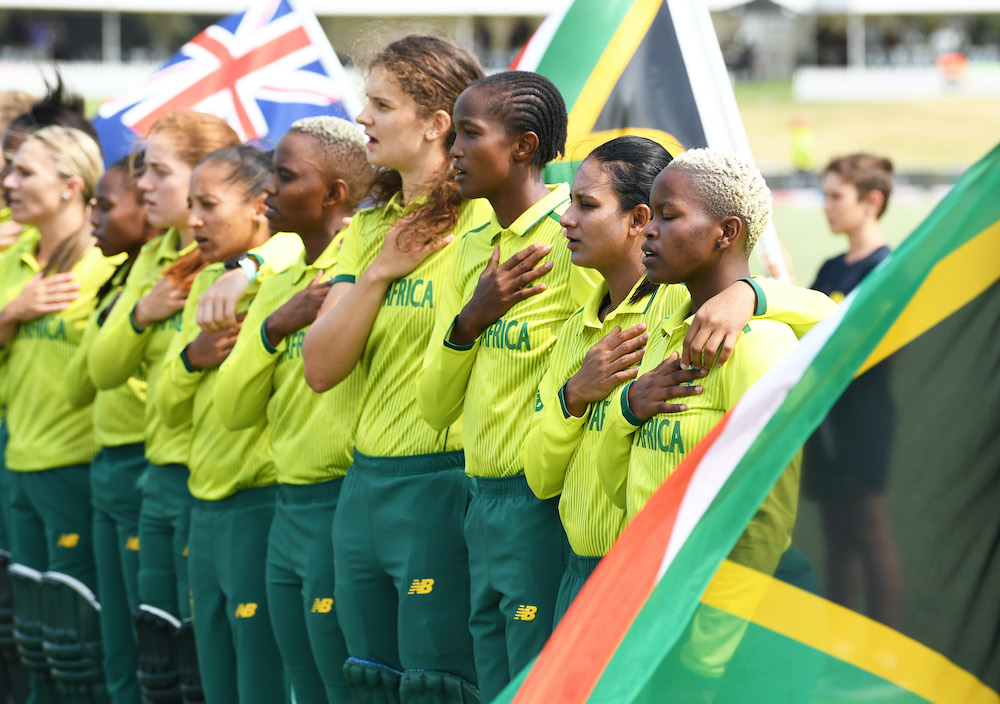
Due to limited numbers and talent, Kapp was almost forced to “play with the boys” when she was in school, saying that Eastern Province couldn’t even field U13 and U15 girls sides.
She added that now “most provinces have U13, U15 and U19 girls teams”, which bodes well for the development of the game, as well as its increasing standards and participation.
Having cut her teeth playing with men at 1st XI and 2nd XI club cricket level for Old Grey in PE just after school, Kapp admitted that it is a more “viable option for girls to play in girls teams”, emphasizing the point of growing participation numbers.
“When you get older and start maturing more, you don’t want to play in the same team as the boys anymore, because many times, especially back then, they didn’t see girls as cricketers so they weren’t always as accepting.”
Although the women’s game has grown by leaps and bounds in SA, she still feels that the provincial franchises are still “quite a way” from becoming professional.
“I don’t think there’s money yet to make it professional and the skills aren’t quite there yet, but hopefully with a few more years of investing some more into the women’s game it’d become possible.”
“When you get older and start maturing more, you don’t want to play in the same team as the boys anymore, because many times, especially back then, they didn’t see girls as cricketers so they weren’t always as accepting.”
Although the women’s game has grown by leaps and bounds in SA, she still feels that the provincial franchises are still “quite a way” from becoming professional.
“I don’t think there’s money yet to make it professional and the skills aren’t quite there yet, but hopefully with a few more years of investing some more into the women’s game it’d become possible.”
Advertisement
Ezra Poole's Online Wicketkeeping Academy
Learn how to Master The Craft of Wicketkeeping Without Having to Hire a Full-Time Personal Coach.
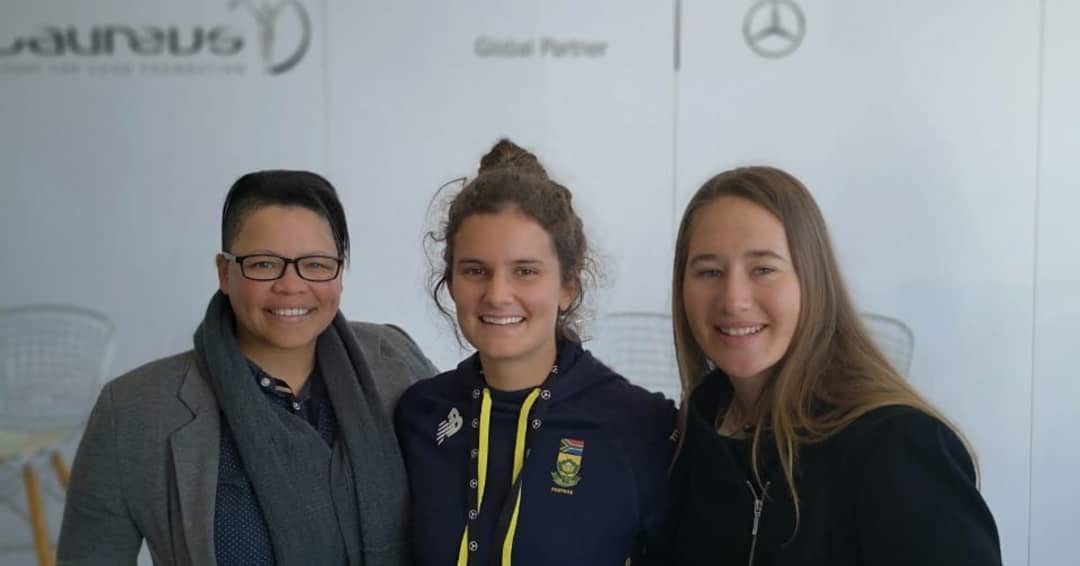
The journey of ladies cricket in Claire Terblanche's time
By Chris Chiwanza
The Olympics have an event called Eventing, an equestrian event where a single horse and rider combine and compete against other competitors across the three disciplines of dressage, cross-country, and show jumping.
This three-day event was introduced to the Olympics in 1912 and is still very much a part of the games. But, despite having been around and being a part of the Olympic games for so long, the world largely ignores Eventing as a sport. When nations broadcast the games, Eventing gets a slot that no one wants, and it's mostly highlights.
However, despite this attitude from the public, participants in the event still give their all, be it in training or competition.
For a long time ladies' cricket has been treated in the same way that people treat Eventing, a fringe sport that no one pays attention to. And this is why, despite the history of ladies cricket (the first ladies Test match was played in 1934, while the first Women's ODI or WODI match was played in 1973 - South Africa played its first WODI in 1997), it has largely been both unnoticed and unappreciated.
And it is because of this lack of attention and nurturing that made the generation of players like Claire Terblanche grow up with a male, instead of female role models.
"I looked up to Jonty Rhodes a lot and wanted to emulate him in the field but also, Herschelle Gibbs’ aggressiveness upfront with the bat," says Claire.
Claire, who had grown up in love with and playing cricket since around the age of five, had never seen a female professional cricketer. Mentored by her grandfather, who had seen potential in her from an early age, Claire had only competed with boys in this "male sport."
This was not only at home, where she was the only girl surrounded by male cousins but also at school. This was at a time when even schools did not bother with establishing a girls cricket team.
So, for a girl like Claire to even get a chance to be considered, it took a special kind of teacher or coach. A coach who cared enough to let a young girl get an opportunity to also partake in the joys of competing on the cricket field.
However, after given that opportunity, just proving her talent and her ability wasn't enough, she also had to contend with being laughed at or receive snide remarks made by opposition schoolboys before they even saw her bat or bowl. The judgement, that "female cricketers seem to be intruding on a 'male sport'", is unending.
As Claire put it, "As cricketers, we are constantly needing to prove ourselves, no matter the class of the player or the experience or the records we have."
A 2018 collaborative research from Women in Sport and the Youth Sport Trust in the UK, found that only 56% of girls recognized that being physically active was important, compared to 71% of boys, while 45% of girls saw the relevance of Physical Education lessons to their lives compared to 60% of boys.
Part of the reason for this being the lack of female sporting role models, thereby sending a message that physical activity and education is a male thing.
Young girls cannot aspire to what they cannot see. Thankfully, strides are being made in televising and publicizing women in sports, cricket included. However, for Claire's generation, it was not so.
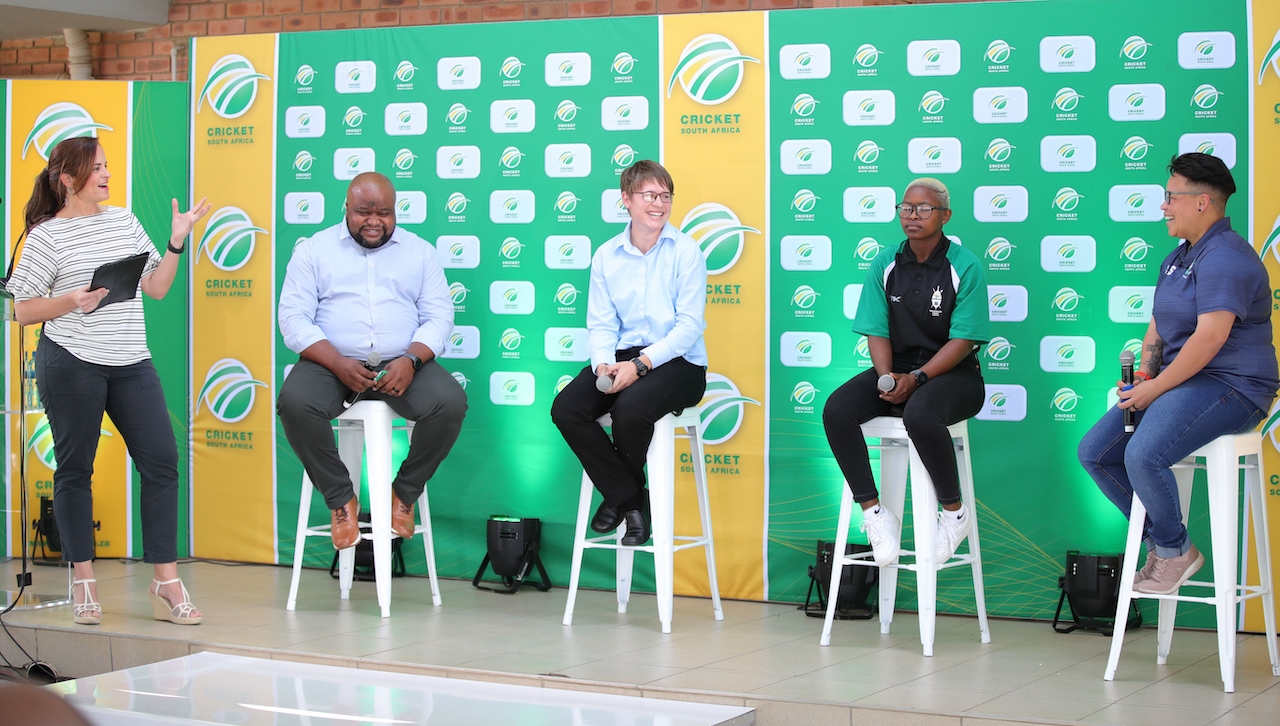
The first female cricketer she saw on TV was Daleen Terblanche being interviewed on a news bulletin in 1997, only six years before she made her own national team debut.
The other thing that has changed is that there were not many female administrators and coaches during Claire's playing days. These days, on the other hand, more and more women are occupying those spaces.
For instance, we have seen Cricket South Africa being led by a woman, Kugandrie Govender. Claire Terblanche, herself, who is now a coach, the Western Province Women's and Girls Pipeline Head Coach, was also once a part of the national team selection panel. All positions that women hardly ever aspired to in the past.
That said, despite these positive advancements, there are still things that need to change that haven't changed since Claire's time.
"Balancing cricket and University studies – We didn’t get paid to play so we had to study while we played so that we could move into a career after studies but still while playing cricket.
"That balance wasn’t always easy but it was always worth the sacrifices so that we could play for our province or country," Claire shared speaking of some of the difficulties that came with being a female cricketer.
Throughout her career as an international cricket player, Claire and her counterparts were not paid for representing either country or province. It was all a labour of love.
"It was only recently that national team players started getting paid, first in form of stipends and then now they get slightly competitive salaries, even though they do not compete with their male counterparts.
At the provincial level, however, things are still very much the same. Female provincial cricketers still do not get paid, save for those contracted with Gauteng who only started getting paid in 2021.
Claire hopes that the current situation with provincial teams and payment of players will change soon, because, the future depends on it.
"We do need to look at professionalizing our Senior Provincial competitions as this is our feeder system into the National Academy and High Performance squads which feed our Momentum Proteas team.
"How things are looking and progressing around the world, I am hoping it happens sooner rather than later. But in saying that, sponsor backing from companies dedicated to Women's sport, can really help achieve that sooner."
Having gotten into cricket when there was very little that one could take from it, besides the pride of competing at the highest level, Claire has watched the game grow and develop.
There is a bit of a distance to go. But unlike the situation with Eventing, where it seems to be stuck in one place for decades, ladies cricket is moving forward. The pace might be minimal, but it is progressing.
Thus, instead of being pessimistic, she is very optimistic of the future, because with "more media coverage, which could have a ripple effect to bringing in more sponsors to the Women's arena.
"Not just for the National team but for Provincial Senior teams as well. The more exposure we get in social, print and broadcasting, the more of an 'interesting' package we can offer sponsors.
"I do believe that it is the time for companies to be backing Women's sports – in my particular sport of cricket, it is ideal as there are new strides in the pipeline being made."
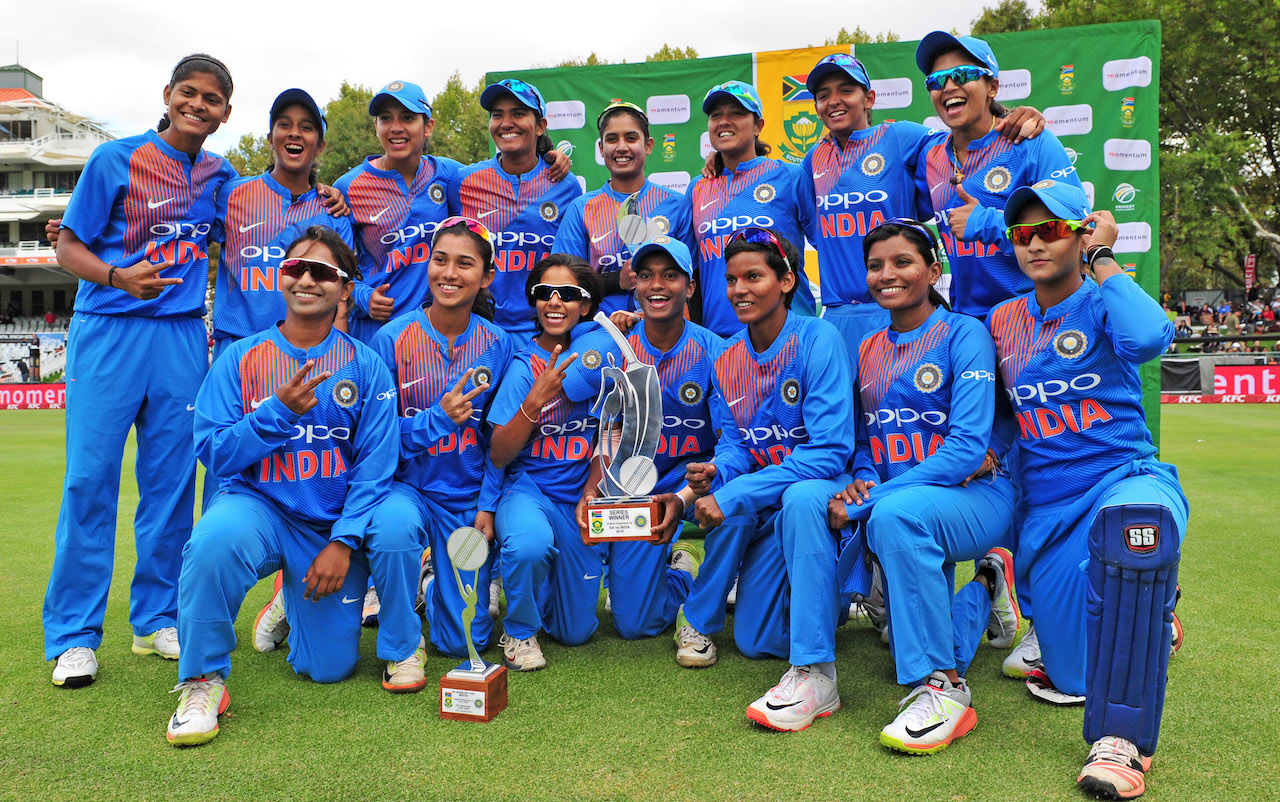
Reflecting on the lessons the South African women’s game can learn from India
By Aditya Mehta
“Women’s cricket needs promotion, so far it has been done mainly through T20s and ODIs” – Mithali Raj, Test and ODI captain of the Indian women’s national cricket team
Sometimes, cricket is more than the technicalities of the game. Cricket is more than the nature of the domestic structure. Cricket is also bigger than the talent pool available in a country. Sometimes, we need to think about cricket in terms of access.
In reflecting on the lessons the South African women’s game can learn from India, this piece will assess key moments in the recent history of women’s cricket in India, and argue how better access to the game made the public fall in love with women’s cricket, ultimately pushing administrators to incorporate a professional structure that would help develop the women’s game in India.
Women’s cricket, over the last decade, has witnessed remarkable growth. According to India’s Broadcasting Audience Research Council (BARC), 74.8 million Indians watched the ICC Women’s Cricket World Cup in 2020. 42.6 million of these viewers were male, while 32.2 million viewers were female.
Up until this point, the most successful women’s cricket event was the ICC World Cup in 2017, which garnered a tenth of the viewership that the 2020 World Cup received.
Women’s cricket in India, in my experience thus far, has been in the news because of key contributions made to the game by stalwarts such as Anjum Chopra, Mithali Raj, Jhulan Goswami, and now, Harmanpreet Kaur.
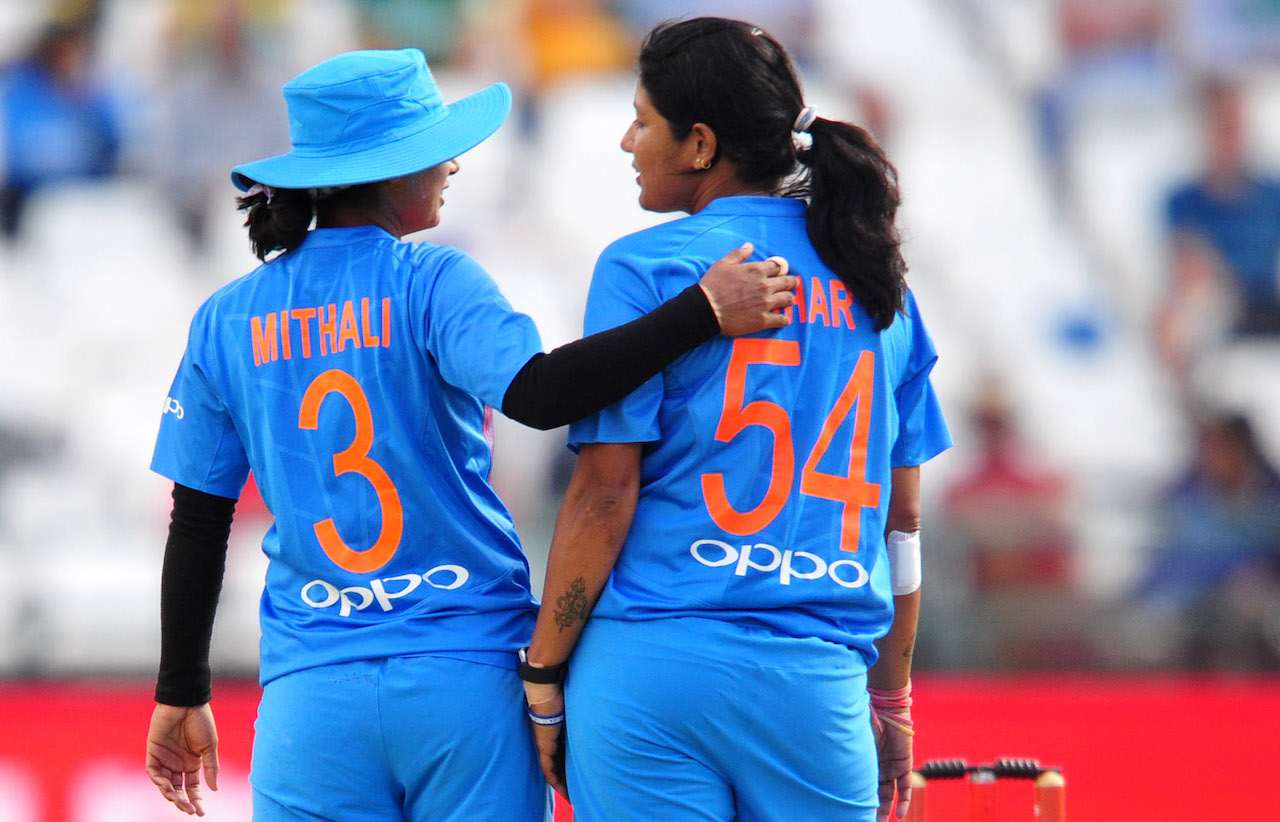
While their performances were recognized, the public did not have avenues to watch Indian women cricketers showcase their skill. With broadcasters such as Star India and the video streaming platform, Hotstar, offering easy access to follow women’s cricket, its popularity has grown significantly, and ensured that the BCCI has put in place a professional structure that equips cricketers to perform on the world stage.
Historically, whenever individuals and cricket teams have produced noteworthy performances in ICC tournaments, public interest in the game has increased. Kapil Dev’s 175 against Zimbabwe in 1983 World Cup in England, which India went on to win, was a watershed moment in Indian cricket history, inspiring millions of young men to pursue the game professionally.
Similarly, almost two million New Zealanders tuned in to watch the Black Caps in the 2015 World Cup final, offering their support to an aggressive brand of cricket ushered in by Brendon McCullum. In the Indian women’s game, Harmanpreet Kaur’s unbeaten 171 was important to women’s cricket in India because it gave the Indian public a glimpse into the talent on offer.
The new level of popularity that Indian women’s cricket gained in the last few years has professionalized the game. Harmanpreet Kaur, the captain of the Indian T20 team explained: “Earlier there used to be a huge difference between a domestic player and what is expected at the international level.
"But now, some 30 girls are given individual programs by the BCCI. As we keep improving our domestic level, the performances at the international level will improve.”
For instance, fitness camps are now a regular feature at the National Cricket Academy in Bangalore in an effort to ensure that the Indian women’s team is at par with the fitness levels of the Australian and English teams, which Kaur conceded was a product of far more sophisticated domestic structures in Australia and England.
There is also a concerted attempt to elevate the Indian team’s fielding standards. Kaur reflected that the Indian team often practiced in the day, while major tournaments are often day/night fixtures, which the team has been unaccustomed to.
Playing more games under lights have slowly, but surely, improved the team’s fielding. Nurturing the talent we have at our disposal has led to superlative performances on the international stage, capturing the attention of the cricket-loving Indian public.
The sustained interest of the Indian public in the women’s game has ensured the administrators invest heavily in the development of women cricketers.
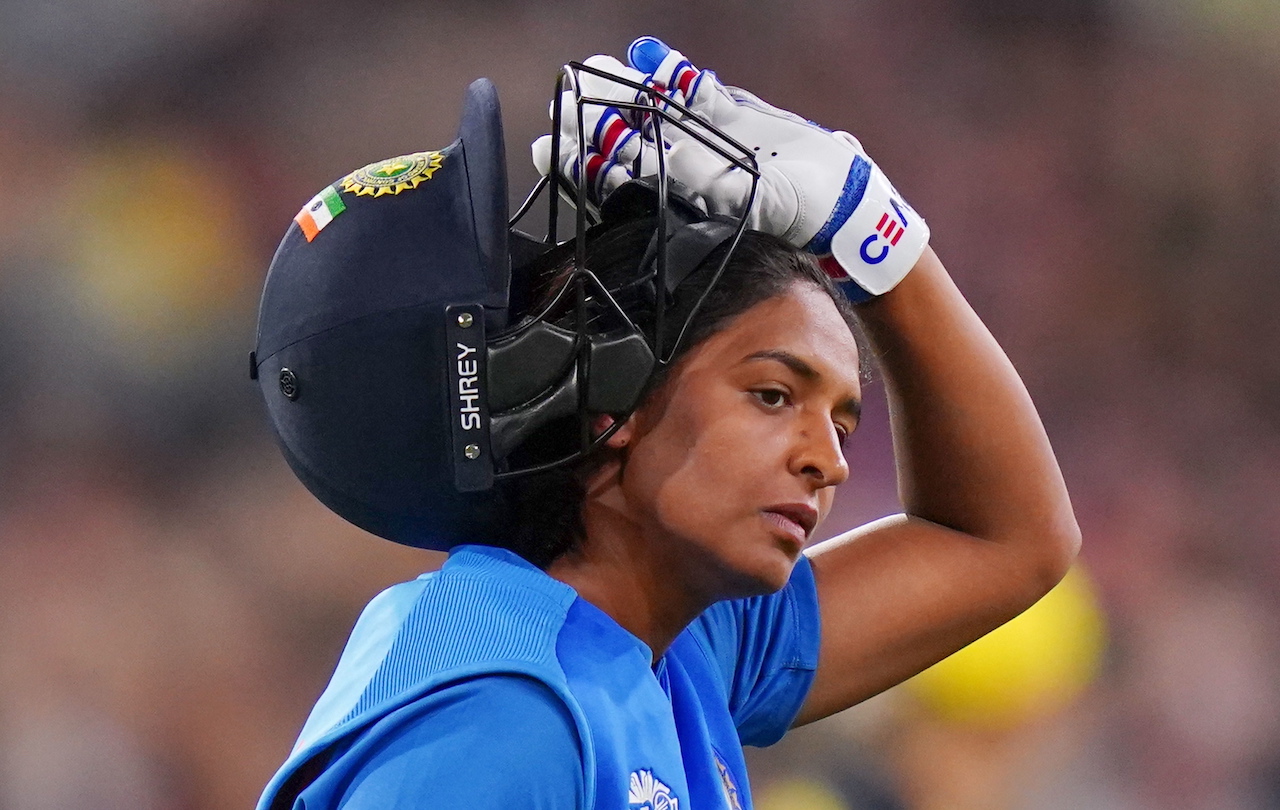
The cricket fraternity is well aware of the talent in the South African women’s game. The heartbreak from the semi-final of the 2020 T20 World Cup is still fresh in the minds of the cricket community.
Names such as Dane van Niekerk, Shabnim Ismail and Marizanne Kapp, have been etched in the memories of cricket fans across the world.
In addition to South Africa 4 other South African cricketers (Mignon du Preez, Laura Wolvaardt, Nadine de Klerk and Trisha Chetty), are highly sought-after in the Women’s Big Bash League in Australia.
The exposure to international leagues has improved their games. Now, South Africa need to find a way to showcase their talent to the South African public.
From a broadcasting perspective, Cricket South Africa has partnered with Star India till the end of the 2023/24 cricket season to televise South Africa’s games, in addition to playing them on digital mediums.
Meanwhile, within South Africa, Cricket South Africa and the South African Broadcasting Corporation have finalised a deal to present live cricket on television and radio. To increase access to cricket in South Africa, it is vitally important for Cricket South Africa to explore platforms beyond television and radio.
Millions of Indians watch live cricket on the Hotstar app on their phones. The opening game of the IPL in 2020 had a total of 200 million viewers on TV and Hotstar combined.
These are staggering numbers. Looking at the Indian model of cricket consumption, Cricket South Africa has an opportunity to take cricket into the smartphones of the local population.
In 2014, 9.7 million South Africans were using smartphones. In 2021, 24.5 million people are using smartphones, and that number is expected to rise to 26.3 million in 2023.
South Africans accessing cricket on their phones will, undoubtedly, elevate the interest in the women’s game, and inspire more young girls to pursue cricket professionally.
In conclusion, Cricket South Africa has a responsibility to deliver cricket to as many South Africans as they possibly can. If the South African public is deeply invested in the game, there will be pressure on administrators to hone the plethora of talent in the country.
Former Australian captain, Ian Chappell, once said: “Most young cricketers take up the game because they adopt a hero.” Let us find ways to give young South African girls avenues to watch their women cricket team’s idols.
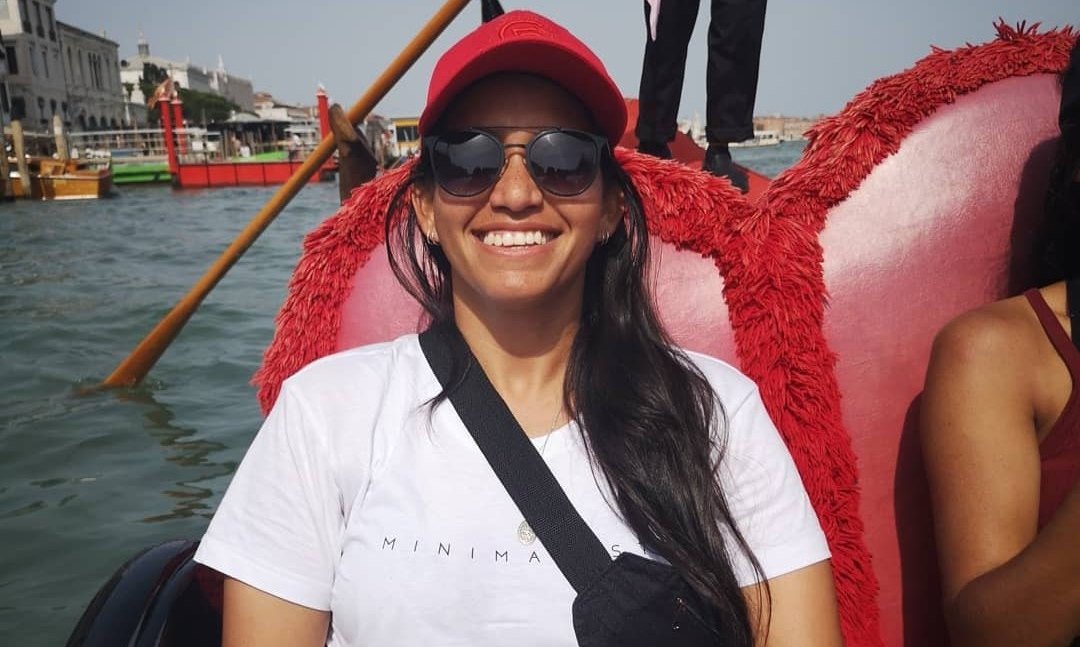
Off the Field: Gabi-Lee Van Der Westhuizen
By Jessica & Janine October
Your interest in cricket began at a young age, what would you say sparked this interest?
I started watching a lot of the men’s game around 98’, 99’. I grew up obsessed with cricket, my dad would wake me up early mornings before school and watch some of the Test or ODI cricket when SA would play in India or Australia, and when I’d get to school, we’d play cricket just before class.
How did this lead to an administrative role?
The administrative role now was manifested from my desire to continue playing an important part in the game and giving back to the game. Becoming an academic has given me the tools and skills to contribute more than I could have imagined. I hope I can continue this journey being part of the game.
Who is your favourite male or female cricketer? Either at a domestic or international level
Jacques Kallis and Meg Lanning
There has been a massive rise in women’s cricket over the last decade. What can still be improved particularly in the South African game?
The women’s domestic cricket in SA needs a great amount of attention, particularly in making it a professional game. With the added competitiveness domestically, we will produce a bigger pool of elite players that will create healthy competition amongst our current national players.
I feel only then we will see more consistency amongst them to remain on top of their game. There is plenty of quality in the squad, but it’s up to those who want to stay on top and dominate their place.
Who inspired you the most during your former years? And at present?
I tend to take much inspiration from the big sports stars and teams; Roger Federer, AB De Villiers, the Springboks, to mention a few. But I don't know them and they don't know me, so I keep the inspirations and motivations a little close to home.
My mom, colleagues, close friends. I like to surround myself with people who are ambitious, self-motivated and love to have a conversation. I think the WP team as well, their drive to constantly achieve success. It's been great to be part of the team and their success. Some of the players I have known all my life, and it's amazing to have grown with them. They have been an inspiration to me to keep working hard.
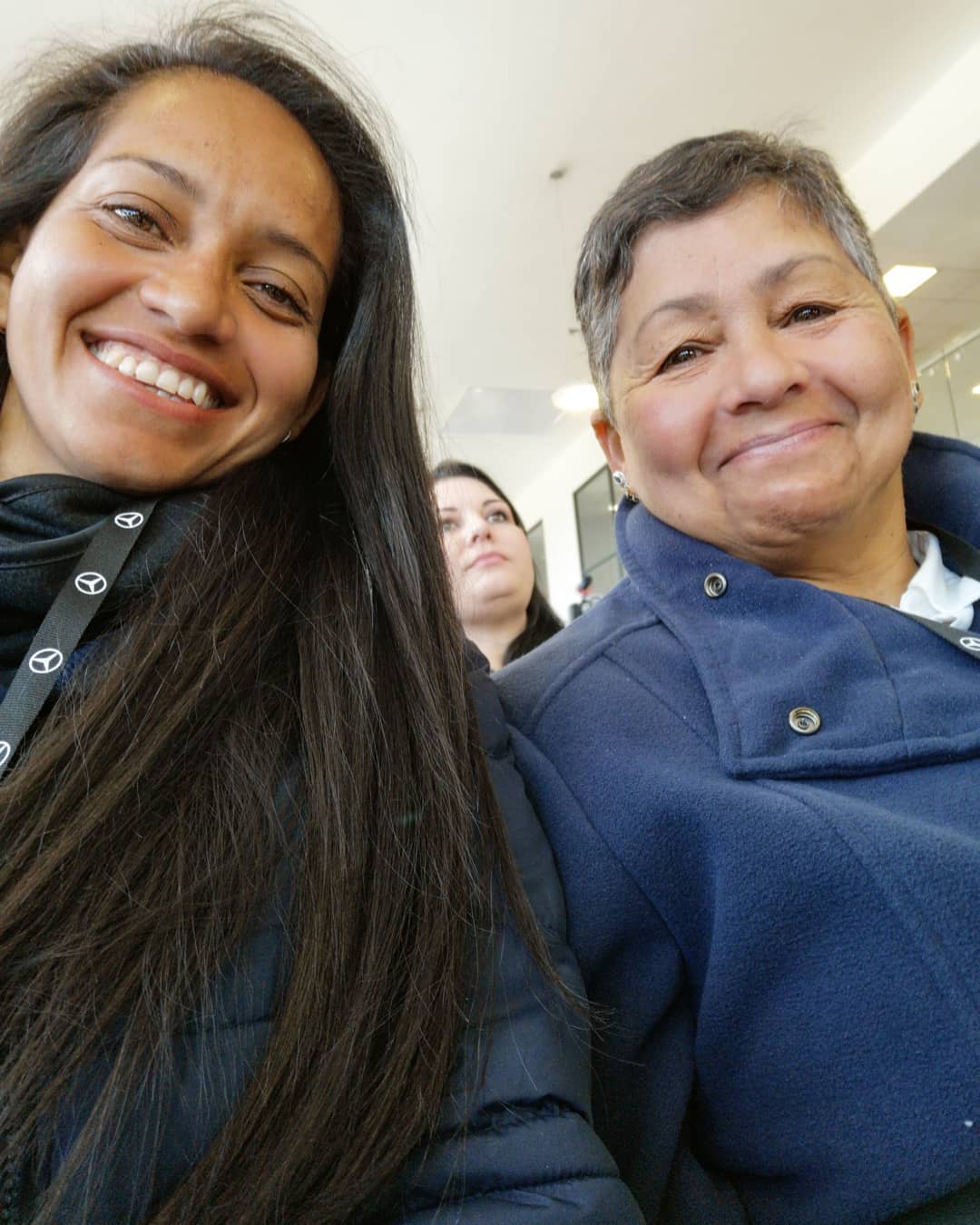
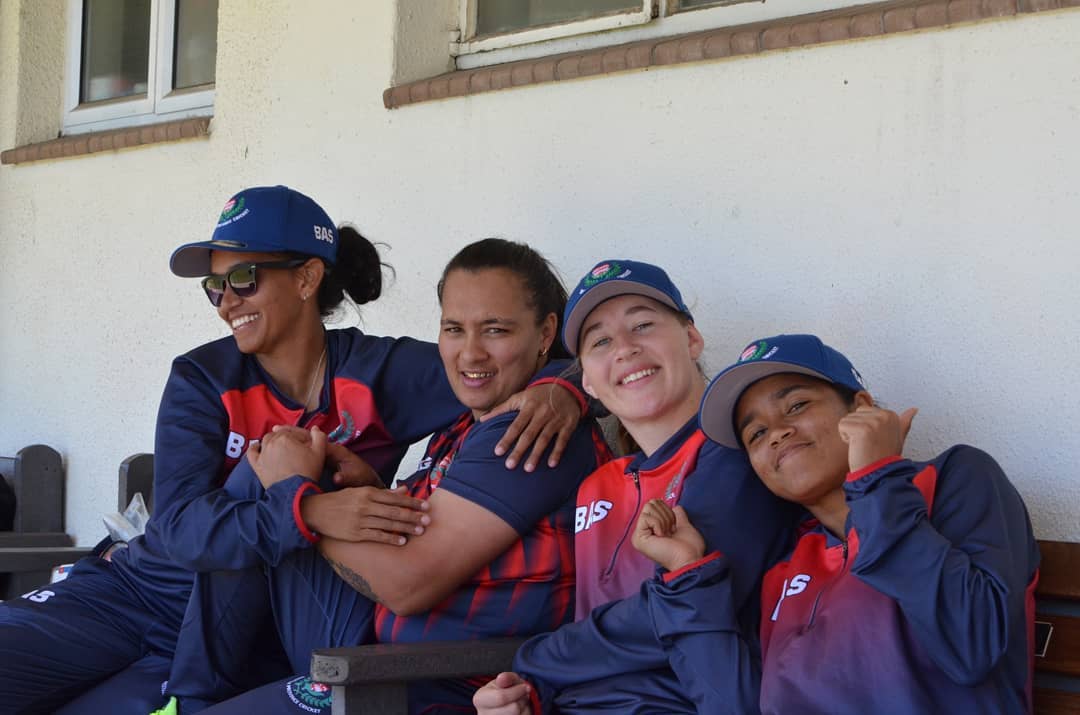
Describe a day in the life of a women’s cricket team manager.
A privilege! The players I work with are incredible people and so talented. It’s all about the relationships; it’s a constant give and take and more giving than taking.
The women’s domestic game is still an amateur one, and the demand we put on the players to reach and maintain a high standard requires constant motivation and pure love for cricket.
We are required to understand the players and their dreams, if they want to study, work, or play for the national team, it is our responsibility to nurture their goals, create that balance and emphasise ownership and responsibility. It is tough, but always worth it!
What do you do to relax? When you get the opportunity to do so.
Football and a braai, my favourite unwinding things to do.
What types of foods do you enjoy?
Seafood! Particularly sushi.
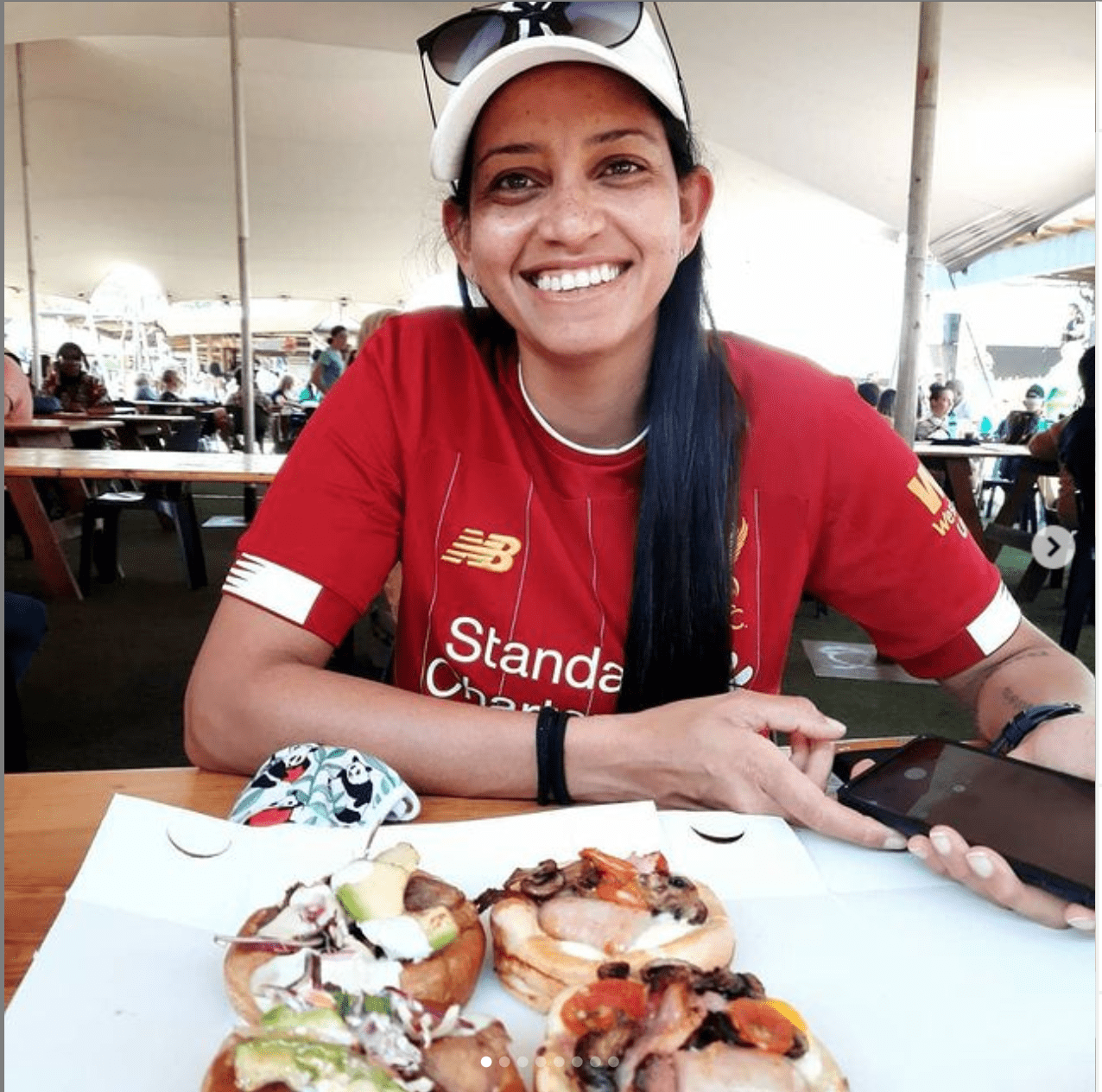
What is the toughest part about being the WP women’s cricket team manager?
Maintaining balance. It is challenging to manage the players and their priorities and still achieve success. They train hard, mostly on their fitness and skill. Their lives still need to carry on even though cricket is demanding. They still have school, studies and work. Motivating the players and maintaining a healthy balance is paramount in our team. The upkeep of this culture takes both discipline and empathy.
What do you enjoy the most about your job?
Being there for the team, the players, the coach. Making the situation easier for them to do what they need to do. I enjoying imparting knowledge and experience, mostly having conversations about performances, fitness, and mental toughness. Watching the players perform and excel with their game, well knowing that there's been hard work behind the scenes. It really is wonderful to see them grow and be part of their growth.
As a youngster you also played some soccer. Liverpool or Manchester United? If neither, please specify which team and tell us why you support them.
Liverpool. YNWA
What were the struggles and highlights of your career?
Rejection; when I look back, I remember how I never got that job I wanted, I wasn’t good enough, I wasn’t the fit. To this day, nothing has changed, we all experience obstacles along the way.
Privileged; even though there have been many obstacles and rejections, I have always found a way, I did better, learned new skills, worked harder, did more. The more I gave, the more I received.
What helps you stay motivated each day? Words of wisdom/verses?
Bills! Haha. No, every day I just try and give my best. I pray for guidance and strength for the day and give it my all.
Tell us something about yourself that most people do not know.
I'm double-jointed in almost every joint in my body. I can hyperextend my legs, arms and fingers. lol
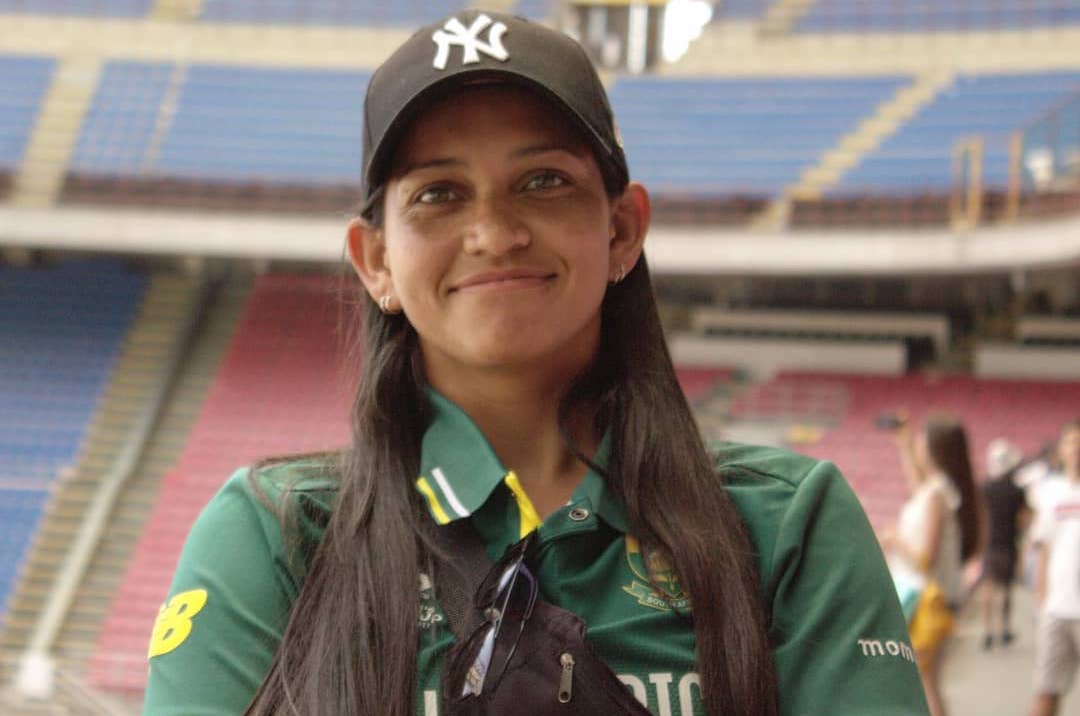
Who would make your fantasy XI women’s cricket team?
Alyssa Healy (wk)
Laura Wolvaardt
Meg Lanning (Cpt)
Mithali Raj
Stephanie Taylor
Ellyse Perry
Marizanne Kapp
Jess Jonassen
Shabnim Ismail
Megan Schutt
Poonam Yadav
Ashleigh Gardner (12th)
Before a game, what are some rituals or even superstitions you and the team have?
When we’re batting, we don’t like moving around much. We all sitting and we stay there, especially when there’s a good partnership going.
Are you a cat - or dog person?
DOG.
Are you currently studying? If so, what are you studying and where? Also, if you have studied prior, please mention what you have studied.
Yes, I’m doing my MA in Sports Science - Mental Skills. I have 2 degrees in Sports Science, including an honours degree.
What are your top 3 series/documentaries/movies that you watched during Lockdown?
1.Tiger, 2. Schitt's Creek, 3.American Crime Story: OJ Simpson Trial
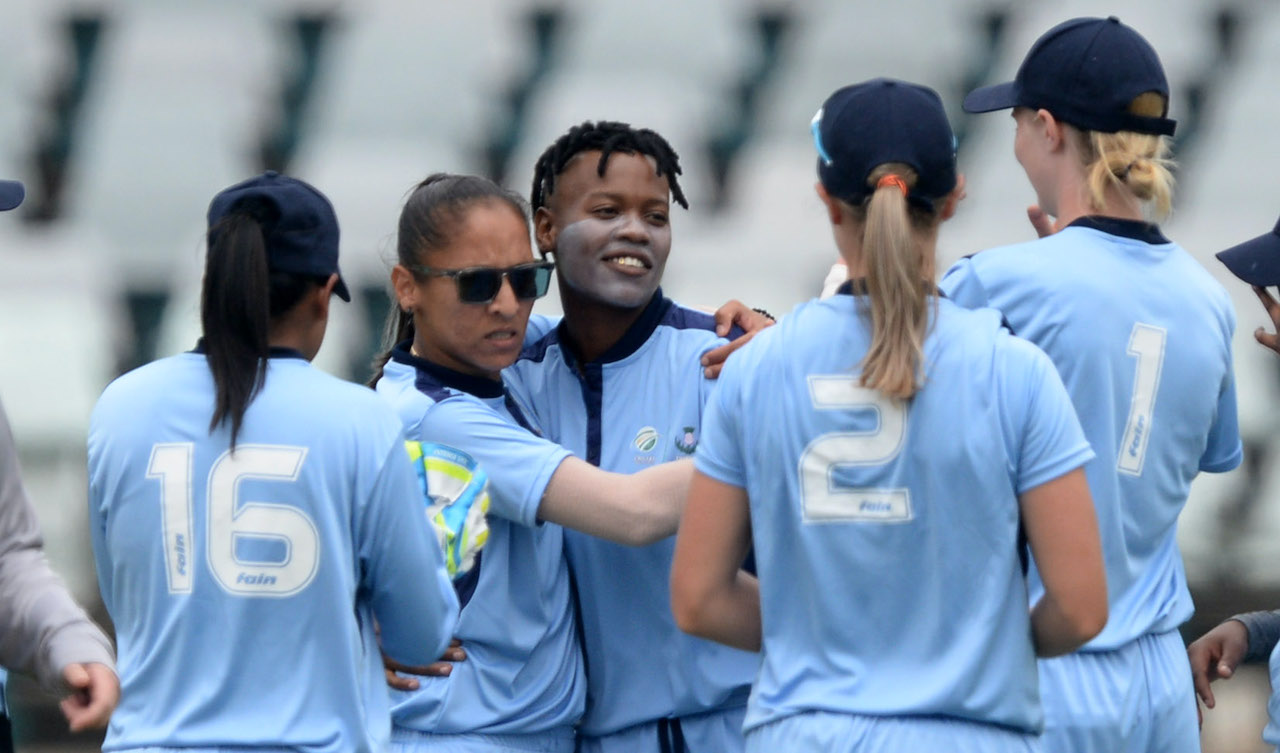
Importance of WSL for Next Generation of Aspiring Proteas
By Emily Norris
I had the privilege of watching this year’s edition of the Women’s Super League, live at Six Gun Grill Newlands from the 14th to the 16th December.
There were many Proteas Women on show, but what really surprised me were the number of youngsters in the tournament, especially players under the age of 19.
This shows how quickly female cricket is growing in South Africa and that more and more young girls are becoming interested in cricket.
It is no longer seen as a sport that is only for boys, and more schools are starting all-girls cricket teams.
The WSL showed the magnitude of young female talent within the cricketing sphere in South Africa, and that South African female cricket players are just as talented and competitive as other female players around the world.
This was the first WSL that I’ve watched (live or otherwise), and therefore I really enjoyed seeing the current, as well as the next generation, of Proteas Women showcasing their talent.
This tournament is crucial for the development of players and their future cricket careers.
It involves the best of the best from across the country, competing against each other, and therefore naturally helps you to improve your game as well as build character in tough match situations.
Younger players getting to play with their heroes is a massive opportunity to learn from them, hearing how they have gone about their careers so far and what they have done throughout their careers in order to be so successful.
This is an integral part of growth within a youngster’s journey. This is why I believe the WSL is so vital within female cricket in South Africa.
I spoke to a few of the youngsters that took part in this year’s edition of the WSL, to get their opinions on what the tournament meant to them and what their experiences were like.
19-year-old Annerie Dercksen said: “It was an amazing experience getting to play with and against some of my heroes and the best cricketers in the world; I think it’s still surreal.
“I think the Super League provides an opportunity for young players like myself to improve their game, just by tapping into the experience of some of the Proteas and other experienced players.
"Just seeing how they go about their game and what they do in pressure situations has been an eye-opener for me.”
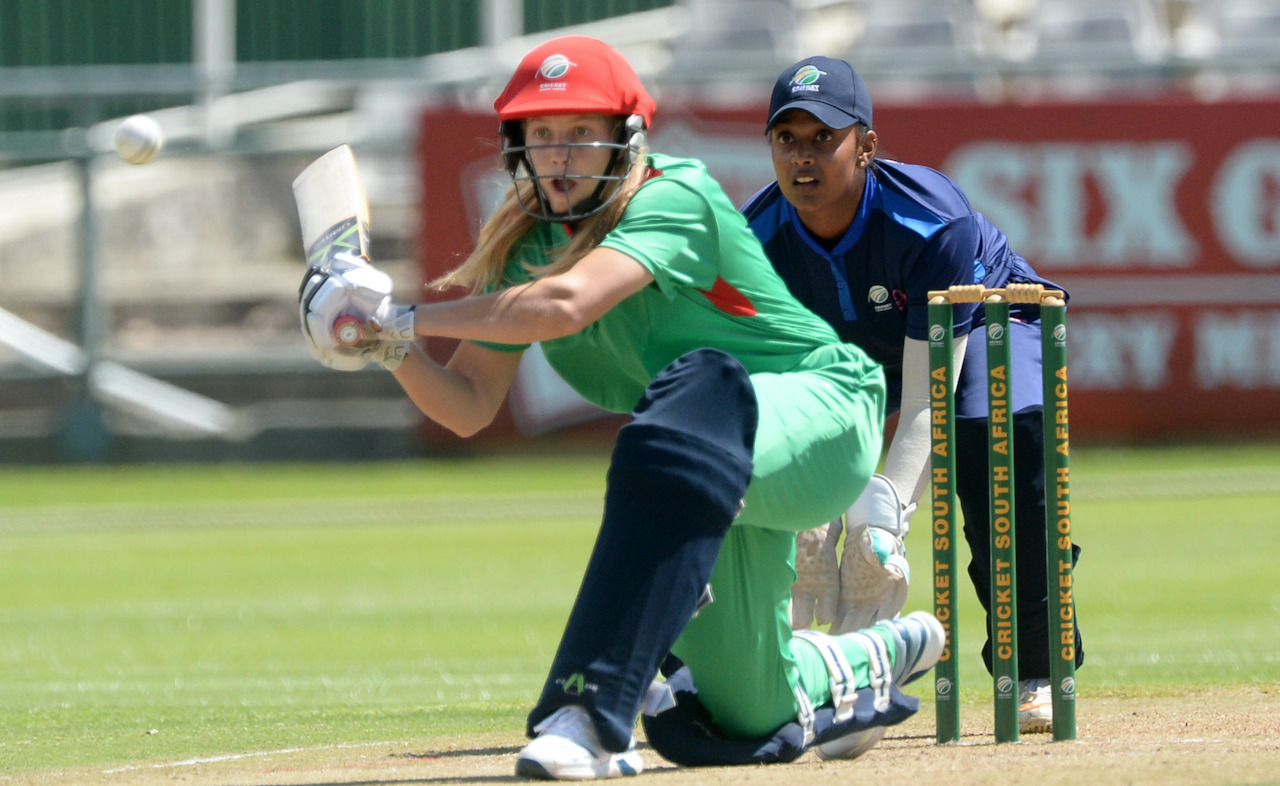
17-year-old Khushi Mistry said: “I felt like if I didn’t enjoy what I was doing – playing cricket – then I don’t think I would have been able to take back a lot or learn much from it [the tournament].
"My bowling [is] my stronger point, and I did better in my batting, so it’s a confidence boost that anything is possible, and you shouldn’t limit yourself in the game.”
16-year-old Madison Landsman, who took four wickets in her two games, said: “The people I was with were very supportive and amazing players in general, so it was unbelievable to be able to learn from them and watch them play and see how they go about their games.
"From the beginning, I wanted to go in and take in as much information as possible.
"The WSL helped me see what I need to work on more in practices, and just overall what you need to be able to play at those types of levels.”
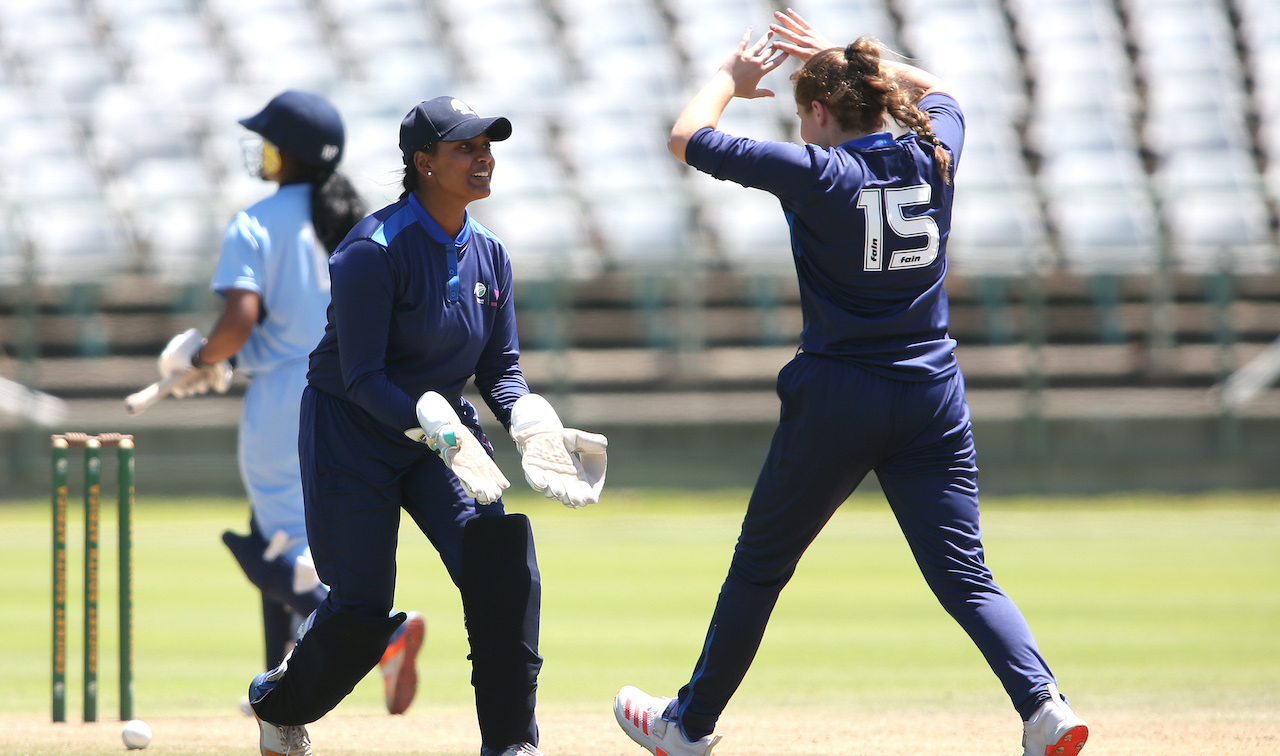
17-year-old wicketkeeper-batsman, Anri Grobbelaar, said: "It is not every day that you get the opportunity to stand behind the wickets when season-campaigners like Klaas and Shangase are firing at the stumps, so I thoroughly enjoyed the experience, and in particular the dismissals that I was involved in.
"Although I didn’t get the opportunity to bat in the middle, I was pleased with my keeping.
"I’m sure the opening will come for me to bat a bit higher in the order and once given that chance, I intend [on] grabbing it with both hands and my bat.”
21-year-old Nobulumko Baneti said that she was very happy and excited to be the top wicket-taker in the tournament.
When I asked her what the key was to take wickets consistently, her reply was: “I am targeting to bowl yorkers, that is why I got so many wickets – because my target is getting through the wicket. There is no other thing I am doing to take wickets.”
We Need More Women in Sport | Umpires Unite! | Offside Maidens | Episode 1
Dinesha Devnarain works with the Dolphins! | Let's talk about it
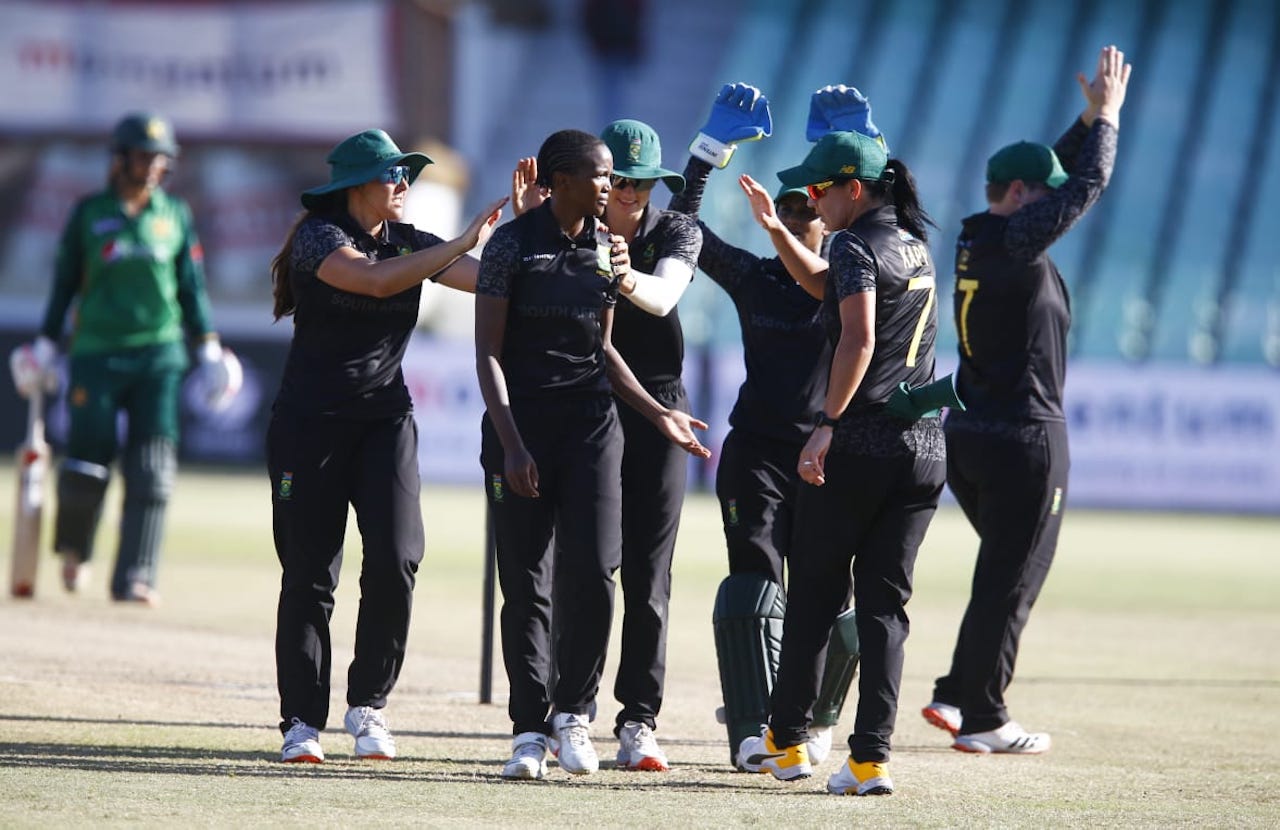
By Lubabalo Skhosana
I have been involved directly with ladies/girls’ cricket for about 3 years now and over the years ladies’ cricket has become something that I am very passionate about.
Before my involvement as a coach, I used to follow only the Momentum Proteas and even that was not easy because they generally do not get the same coverage as the men.
It all started about 4 years ago when I used to help with the ladies’ team at our club whenever I could, and it turned out to be something that I enjoy.
I was then awarded the opportunity to coach the lady’s team at the club (Madibaz Cricket) and that for me was a bit like learning on the job because at first, I thought coaching women would be different to coaching men, then I learned that it is not much different.
I had been coaching U9 and U11 boys’ teams for a while and had a short stint standing in for our 5th team coach so I had a fair bit of experience as far as general cricket coaching was concerned.
Throughout my years working in ladies cricket, I have witnessed so many talented girls and women that play cricket and that wish to be somewhere in the game one day.
Women’s cricket in South Africa is perhaps stronger now than it was a couple of years ago but there remains plenty of work to be done.
You look at Schoolboy cricket and its structure in comparison with girls’ cricket and you can see how big the gap is.
For our women’s cricket to be even stronger we need to look at countries like England, one of the top sides in women’s cricket.
The emphasis is not only on the women’s national team but also with club cricket, regions and school.
The ECB has a proper feeder system even for women’s cricket as opposed to what we have in South Africa where the national team relies on the senior provincial team which is not even considered “professional”.
It is good that we have weeks for girls cricket the same way we have weeks for boys, but it does not help much that in most parts of the country these girls that are selected for girls regional weeks do not even get to play more than 3 club and school matches combined for several reasons.
You get schools that play 2 matches throughout the year because the region does not have many schools that have girl’s cricket. You get club cricketers that play less than 10 matches in 2 years of club cricket because clubs do not have women’s teams.
One can blame clubs but even if clubs did their bit to try and make sure they have women’s teams; how would they make sure that they keep them attracted to the game?
There is little to no incentive for playing cricket when it comes to girls. Senior Provincial women do not get contracts which means the only way you can get an incentive is by making the national team and that is something nobody can be guaranteed.
There are a couple of possible solutions to this problem even though neither of them is guaranteed.
For starters, CSA can look to have a women’s cricket rep in the board or even go as far as having a separate Director of Cricket that will focus solely on girls and or women’s cricket.
Ideally, a woman who has been involved in women’s cricket and understands the challenges that come with women’s cricket.
CSA can also look to give incentives to every club that has a functional women’s team or even make it a requirement that for a club to register for certain leagues they need to have a girls team.
Inject funds into women’s cricket and start by giving incentives to senior provincial women.
Some of these will require sponsorships for their success and this is where a women’s rep or Women’s Director of Cricket would come in.
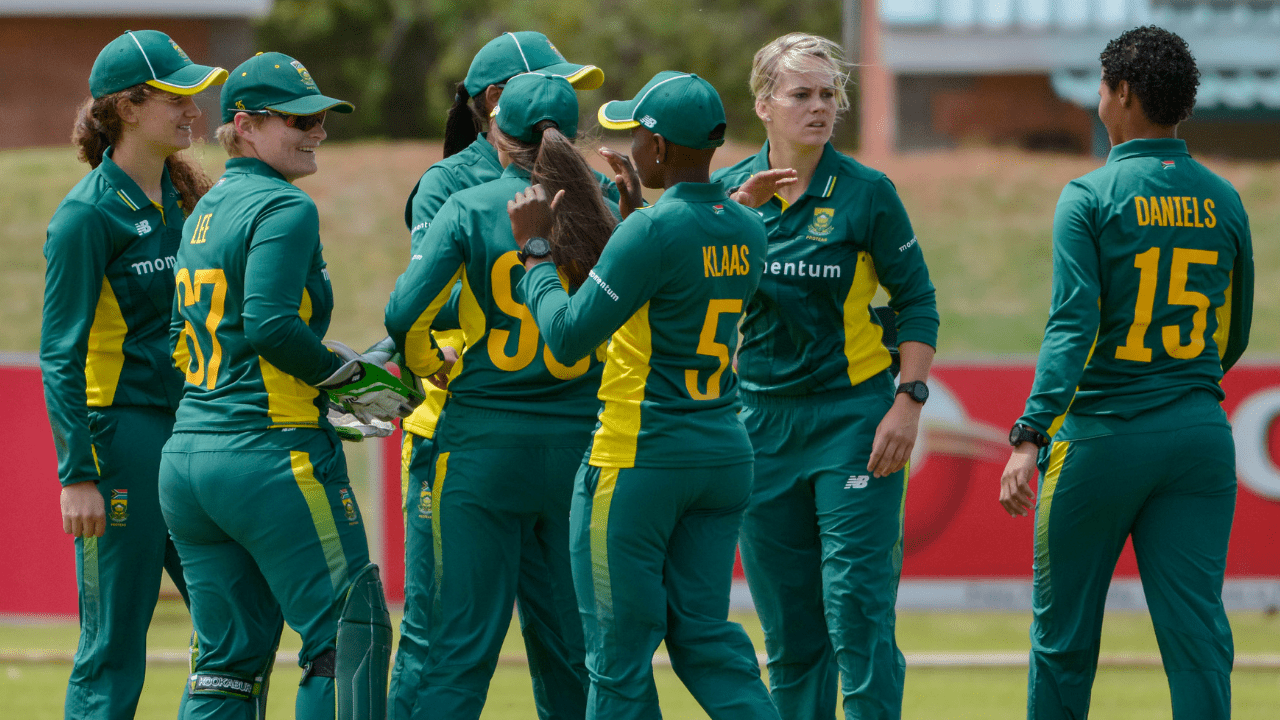
Women's Cricket Deserves Recognition
By Lubabalo Skhosana
South African women’s cricket is not something that is spoken about much in South African cricket even though it has grown over the years.
From the Momentum Proteas to Senior Provincial cricket where we see quite a number of young talented girls coming through.
Even before we can look at the talent pool as a whole in terms of youngsters coming through the system there are youngsters who are already in the wings and all of them are already capped.
There are a number of players who are currently on the fringes that I believe will be shoe in fits in the side once one or two of the senior members of the squad retire or when there is an injury to one of the established players in the side.
I will then pick 5 youngsters I believe have the potential to make the side one day.
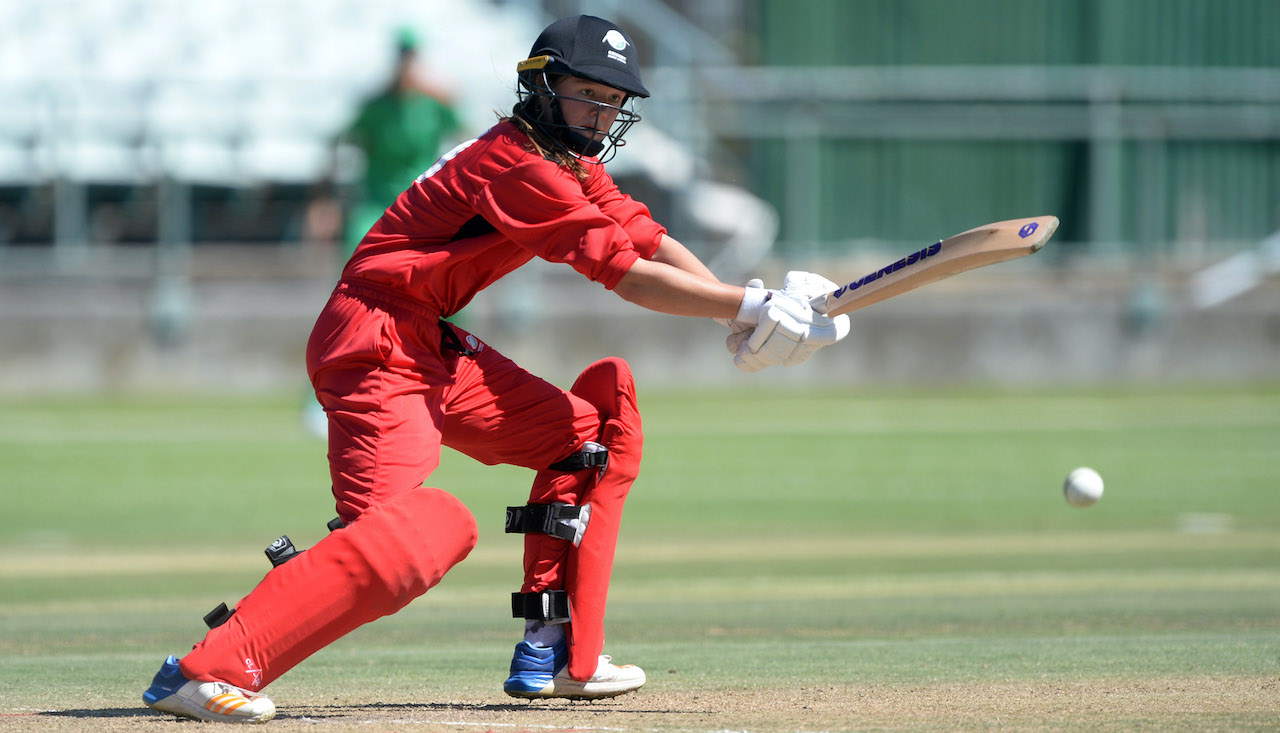
Faye Tunnicliffe
The 22-year-old has played 11 matches for the momentum Proteas. Many may know her as a wicketkeeper, but the classy top order batter has recently shown that she is more than capable bowler too in the Women’s Super League.
Faye is one of those players in the fringes that the team can call upon whenever there is an injury to one of the allrounders in the side and the fact that she provides some wicketkeeping makes her quite the utility player.
Faye finished in 3rd position on the batting charts in the 3rd edition of the WSL behind Sunne Luus (1) and Laura Wolvaardt (2).
She scored 97 runs at a strike rate of 103 and an average of 32. Her bowling was also not bad considering she did not bowl a lot of overs, taking 4 wickets and conceding just 32 runs.
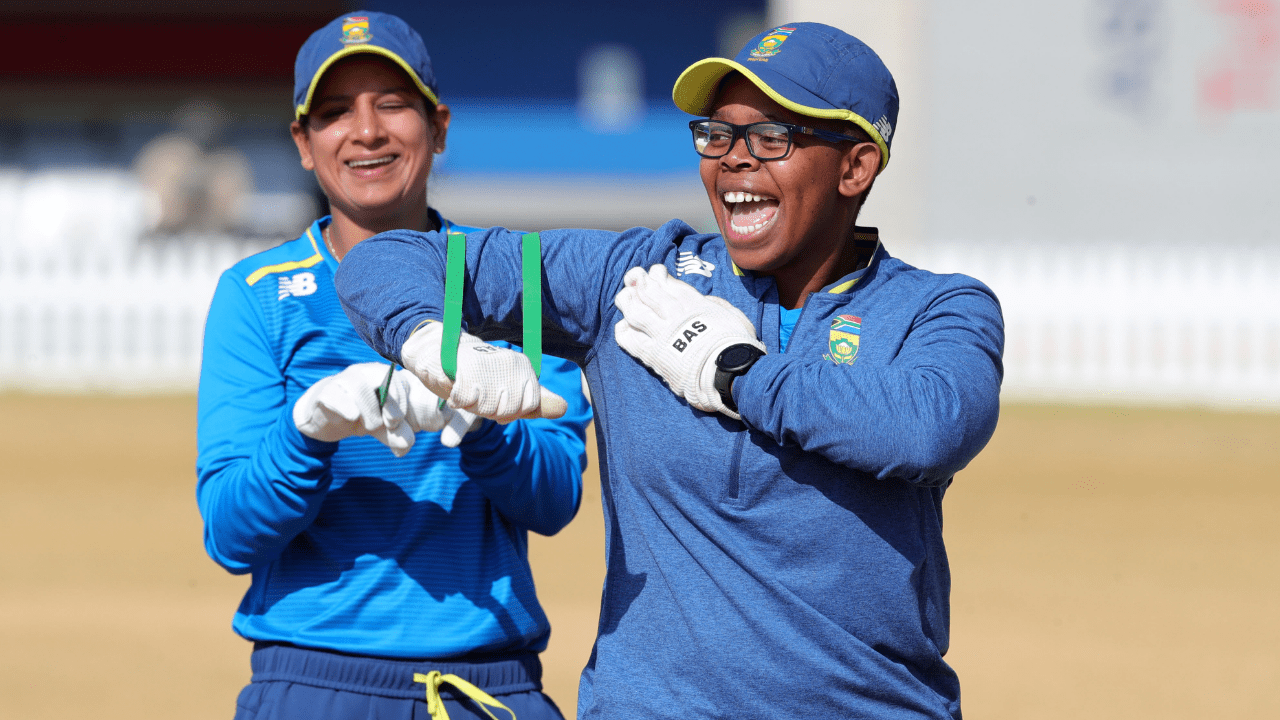
Sinalo Jafta
Teammate to Faye, Sinalo is also one of those players in the wings and patiently waiting to make their mark when the opportunity avails itself again.
Having made her ODI debut against New Zealand in 2016 and her T20I debut in 2019, the 26-year-old has only played 14 internationals for South Africa.
She is a genuine wicketkeeper who is very flamboyant behind stumps and one thing that always stands out the most about her is how she is able to maintain her energy levels and intensity on the field.
Very bouncy and hyperactive even when it comes to running from end to end.
She had a poor outing with the bat in the WSL and even in the internationals that she has played to date, this probably gives off the idea that she needs to work on her batting.
But her performances for the Western Province senior women’s team suggests that she is someone who is working on her batting.
She is definitely a most likely replacement for veteran wicketkeeper, Trish Chetty.
Future Prospects:
There are quite a number of players on the fringes who could, when called upon, raise their hands. Players like Tumi Sekhukhune who missed out on the starting XI at the T20 World Cup and Andries Steyn, to name a few.
We look at 5 youngsters who could make it in the green and gold one day.
In no particular order, these are young ladies who have impressed me that I think have what it takes to become international stars.
They are of course not the only ones in the country.
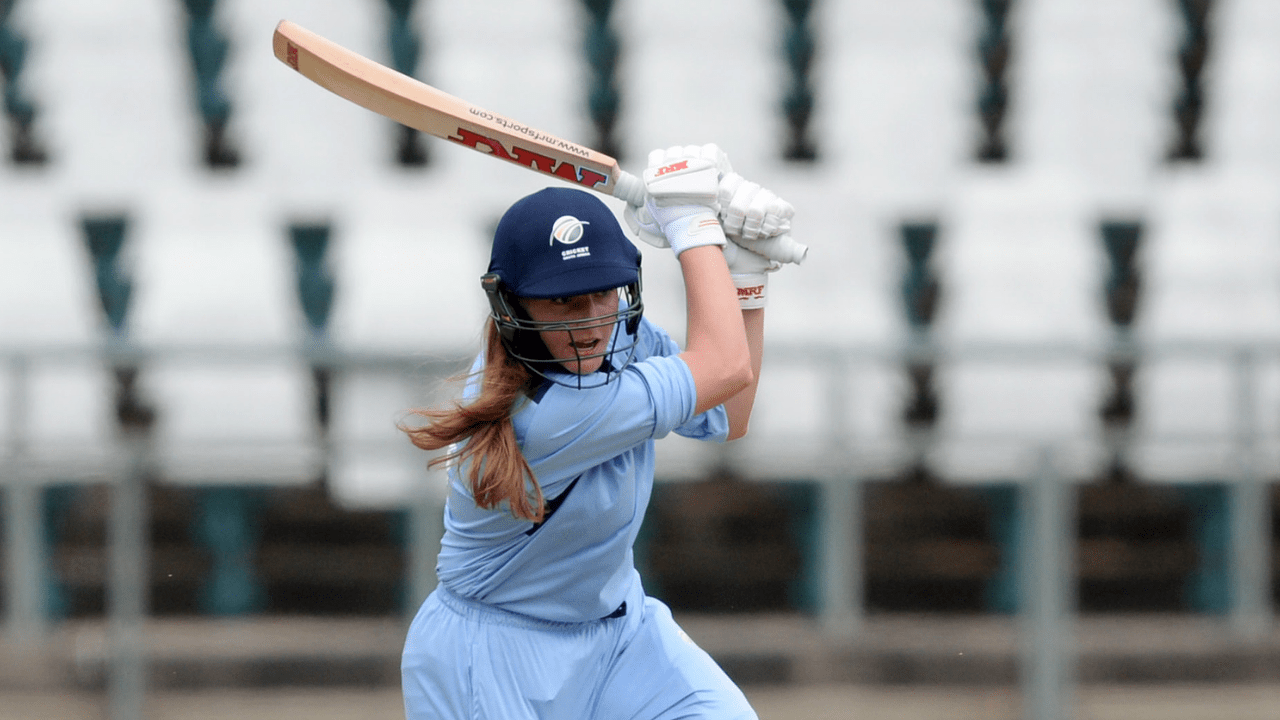
Eliz-Mari Marx, 17.
This is a name many would have heard about already having scooped many awards at the Northerns Cricket Union awards after a really impressive 2019/20 season.
The 17-year-old is definitely one of the most talented youngsters coming through the women’s system. The fast-bowling allrounder scooped the awards for Bowler, Batter and Player of the Year.
She also participated in the WSL 3.0 but like most youngsters in the tournament did not really get much opportunity to showcase what she can do.
She has dominated with both bat and ball at Northerns scoring 233 runs and taking 23 wickets across the two formats. She scored 30 runs across two matches in the WSL and did not get a chance to bowl.
Marx who normally opens the bowling is also known for her ability to keep things tight and not for runs.
“What keeps me going is the fact that I want to represent my country one day.
"So, I am more than willing to do what it takes for me to play on the highest level.”
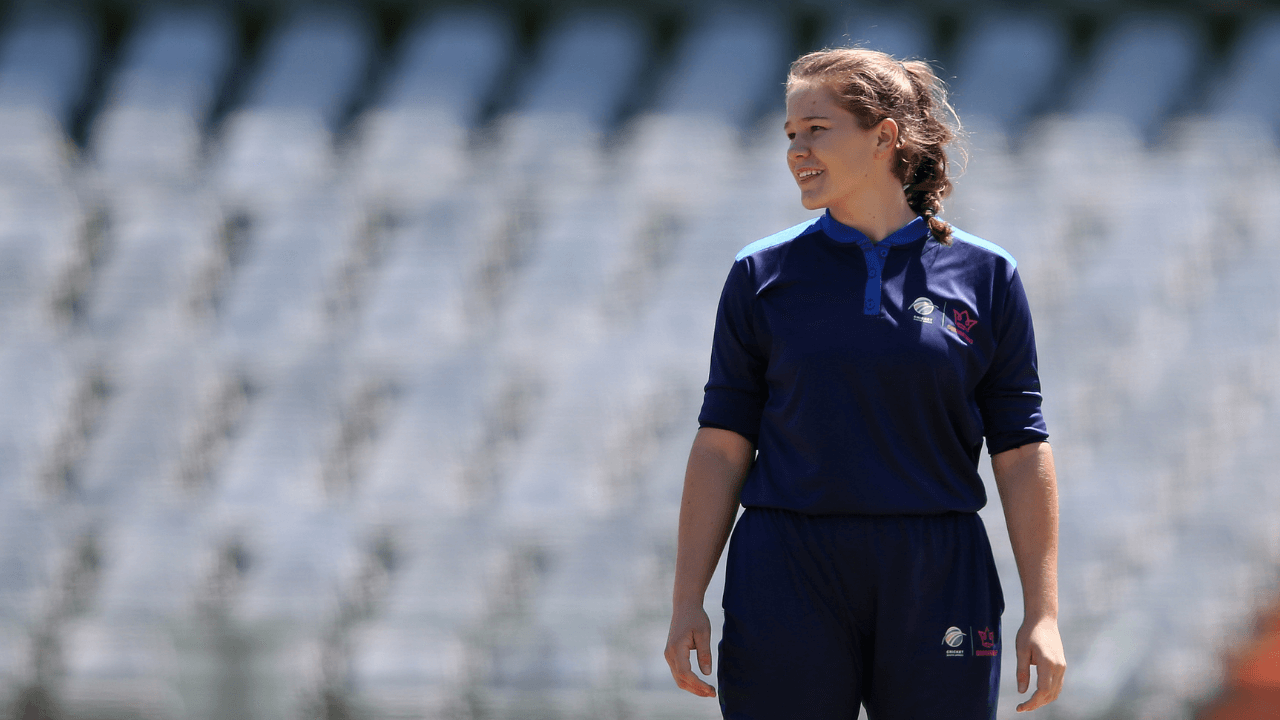
Madison Pamela Landsman, 16.
The 16-year-old Leg spinning allrounder from Easterns also featured in the 3rd edition of the WSL and made the most of the few opportunities that presented themselves to her.
Madison who was selected for the U19 side mid 2020 did not get many opportunities with the bat but certainly made a good impression with the ball whenever she could.
Her flighted leg spinners proved very hard to read for most batters in the tournament as Madison finished with figures of 10 for 3 in 10 overs to help the Coronations win the WSL 3.0. She finished 5th on the bowling charts.
Madison may have not gotten a lot of chances but showed a bit of maturity with the bat when she came on in the final.
She showed the ability to understand her role as she looked to rotate strike and get the senior batter on strike and even though there was not enough overs left, she looked to try and score runs. She would have learned a lot from being part of a Star-studded Coronations side.
“The thought of being a Protea and doing what I love for the rest of my life keeps me going.
"Playing cricket is my passion and the thought of being able to do that for a living is what drives me to keep working hard no matter what.”

Nobulumko Baneti, 21
The oldest of the 5 players I have chosen, Border fast bowler Nobulumko Baneti also had a successful WSL 3.0 campaign.
She finished the tournament as the leading wicket taker at an economy just under 6 runs per over.
Baneti who often opened the bowling for the Thistles showed great skill and control with ball.
She doesn't only posses the ability to swing the ball but can also hit the same line and length consistently and can change her pace quite well.
Her performances in the WSL 3.0 saw her become one of the newcomers in the Momentum Proteas Squad.
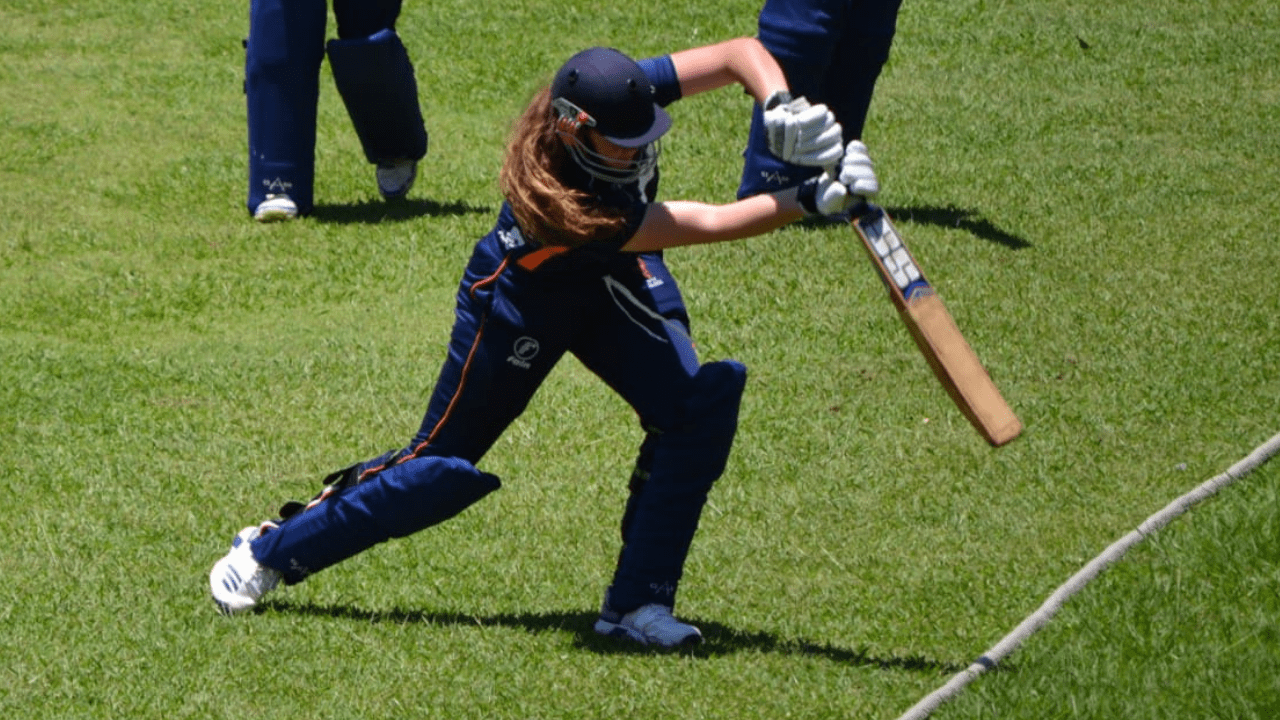
Elandri Janse van Rensburg, 15
15-year-old Elandri recently appeared on Sky Sports after her brother posted a video of her on YouTube and the panel was very impressed with her which is not surprising.
Elandri is a talented allrounder whose batting is in the mould of Momentum Proteas, Lizelle Lee.
She is an aggressive batter with plenty of talent. She is one player I have no doubt will light up the WSL once the opportunity arrives.
She is also working very hard on her bowling as she would like to contribute with both bat and ball. She performed well with the bat for Limpopo across the teams that she played for.
Elandri’s fearless batting is what really stands out. She is for me the most exciting of all the young players I have seen.
“I have a massive passion for the sport, and I want to perform to the best of my ability, but the one thing that keeps me going every day is my brother, dad and my mom!
"My mom always LOVED watching me play, unfortunately she passed away last year!
"The day I pull the Proteas jersey over my head I want to stand in front of the mirror, look up and say "Mom I made it"
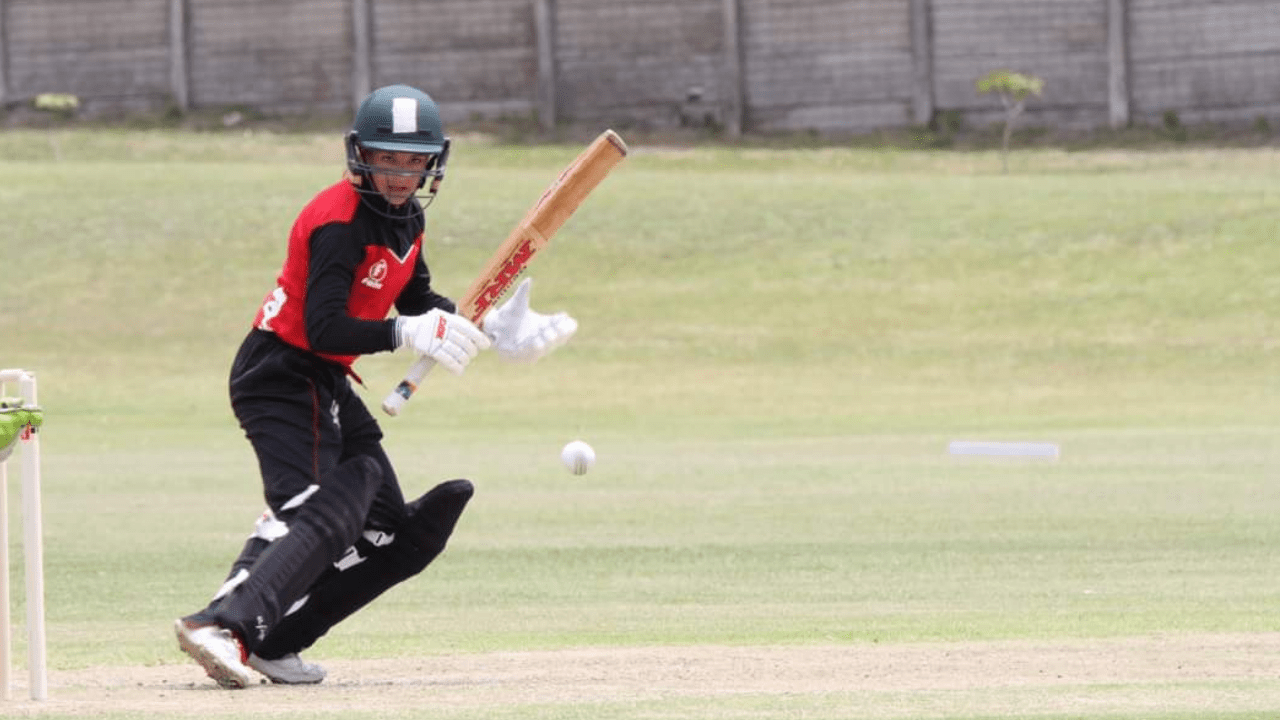
Amber Leigh Botha, 17
A name not many would have heard, but one of the few young talented girls I have been privileged enough to watch live more than once.
EP senior provincial women’s player and EP U19 player, Amber is a Wicketkeeper and a top-order batter. Very matured for a batter her age and understands her game very well.
The multitalented wicketkeeper was crowned Jendamark United cricket Club Sports Woman of the Season for the 3rd time in a row in 2020.
One thing that sets her apart from some of her peers is her natural leadership skills that she has displayed.
A gutsy batter I once watched scored a critical 50 in a T20 final down PE. With everything that was thrown at her in the form of sledging and mean bouncers, she managed to stand tall.
Her ability to get up after being hit by a bouncer, and get on the front foot to cover drive the very next ball is something special.
Amber is definitely someone the cricket world is very likely to see and hear more of going into the next couple of years.
“The passion I have for cricket is something that drives and motivates me to play and enjoy the game immensely.
"Playing cricket for EP ladies where opportunities are very few and far between, once I got the opportunity, I took it and have never looked back.”
Video Playlist
The Podcast Live Show:
Pakistan Series Playlist
Offside Maidens:
Square-Leg Gully:
Magazine info
Editorial Director
Khalid Mohidin
IT and Technical Director
Faizel Mohidin
Contributors
Abhai Sawkar
Aditya Mehta
Aaron Viles
Chris Chiwanza
Emily Norris
Jessica October
Janine October
Khalid Mohidin
Lubabalo Skhosana
Lucy Rees
Marc Jacobson
Mpho Moreki
Ravi Reddy
Graphics
Khalid Mohidin (Cover and Graphics)
Mohammed Hoosain (CFM logo)
Nirdev Udith (Dinesha Devnarain photoshoot)
Images
BackpagePix
Video Binge List:
On Lockdown Series
The Podcast Show
Legends with Ravi
Daily Show
